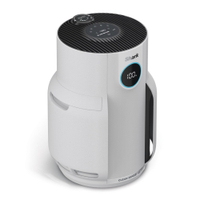The best air purifiers of 2025, tested for fresher, allergen-free air
You can breathe a (perfectly filtered) sigh of relief; these are the best air purifiers out there
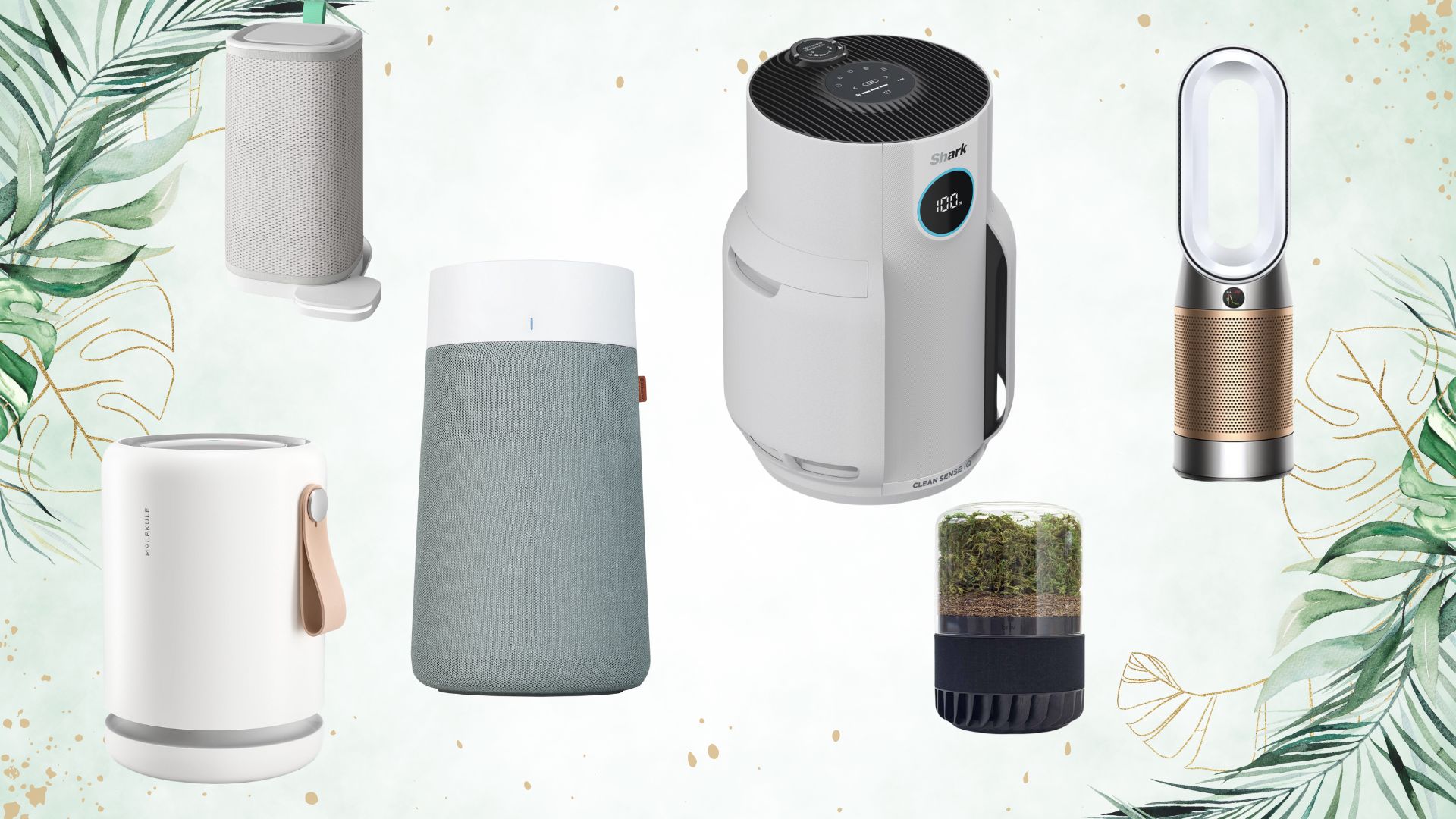

I've tested over 30 of the best air purifiers and narrowed down this list to just six models that I'd recommend. You've got affordable air purifiers that are perfect for pet homes, compact models that you could sit on your desk, and bigger air purifier fans that can warm or cool your space too.
If you think air pollution is something that only happens outside, think again. From cooking Sunday roasts and lighting scented candles through to putting on makeup and cleaning, the air inside your home can quickly become filled with tiny particles and gases that aren't always as harmless as they seem. Whilst cracking open a window is a simple solution for improving your air quality at home, if you're acutely sensitive to pollen or pollutants such as nitrogen dioxide (which can exacerbate asthma), then an air purifier is a game-changer.
Aside from making your home feel fresher, the way the best air purifiers work is by filtering or destroying allergens, chemicals, and other impurities in your air. In my tests, I found the Shark NeverChange offered a simple, speedy way to remove the smell of burnt toast and other scents from my air. However, Dyson, Molekule, BlueAir, Briiv, and Vitesy all brought a breath of fresh air into my home in their own ways.
Today's best deals
If you're shopping for an air purifier right now, you're in luck. Amazon is having a Big Spring Sale, which means that there are deals on some of the best air purifiers on the market.
Shark NeverChange5: was £249, now £193 at Amazon
The Shark is my favourite air purifier of all time thanks to its simple controls, efficient function, and clever DirtDefence guards. It's incredible value for money, especially in the sale.
Molekule Air Mini+: was £349, now £249 at Amazon
The sleek, compact air purifier would be at the top of the list if it wasn't for the price tag. It's perfect for allergy sufferers, as it was designed with the founder's son in mind.
BlueAir Blue Max 3250i: was £149, now £99 at Amazon
At full price this would be incredible value for money, so with 30% slashed off the price tag, it's a steal. Perfect for pet homes, the BlueAir cleans up in large rooms.
The quick list
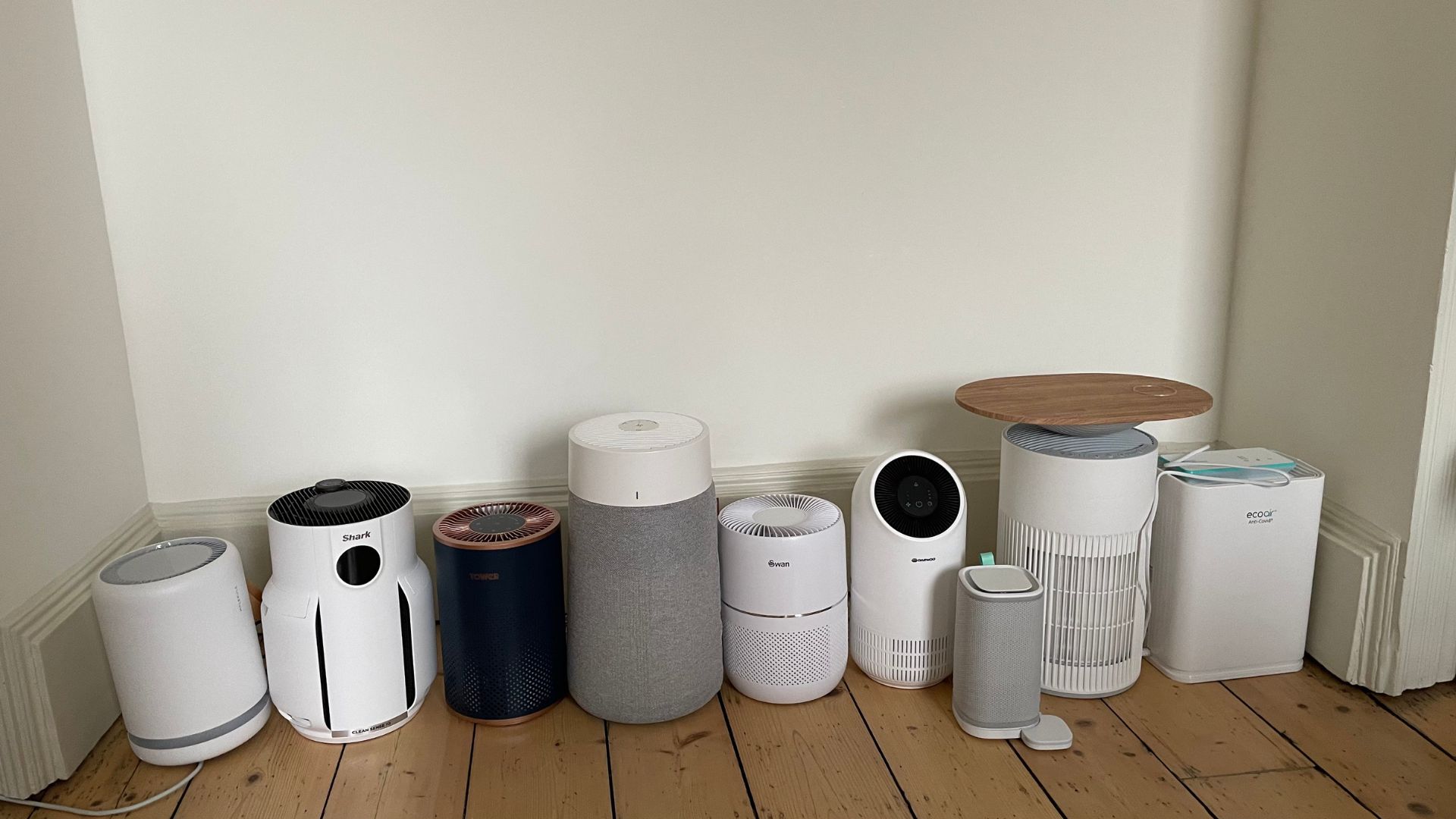
If you want to breeze through the best six air purifiers that I tested, these are the models to know about. If you like what you see, keep scrolling. I've got all the details from my tests written there.
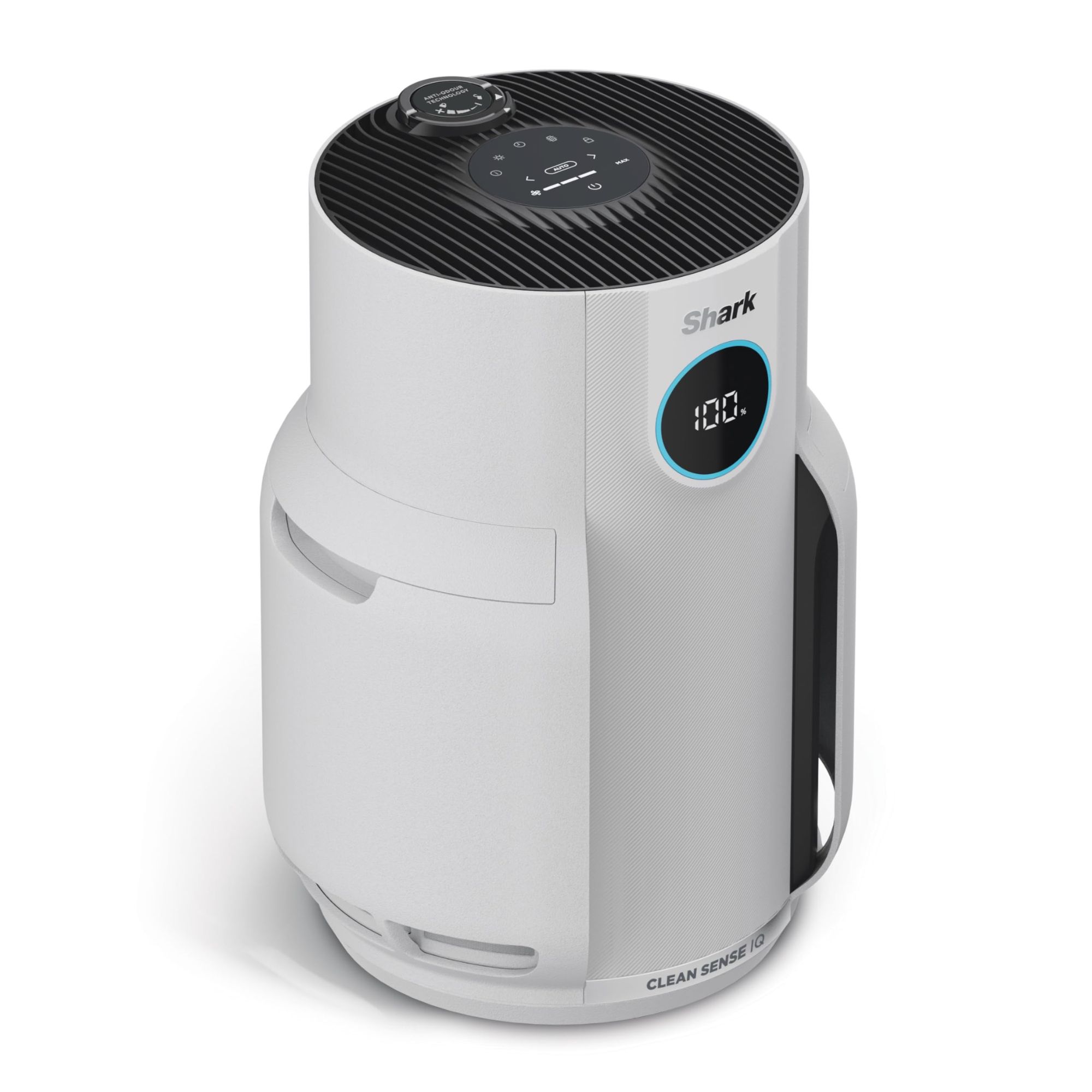
Best overall
This all-rounders gives you live updates on your air quality from a simple screen. It's easy to use, great value, and the DirtDefence guards save you money on filters in the long run.
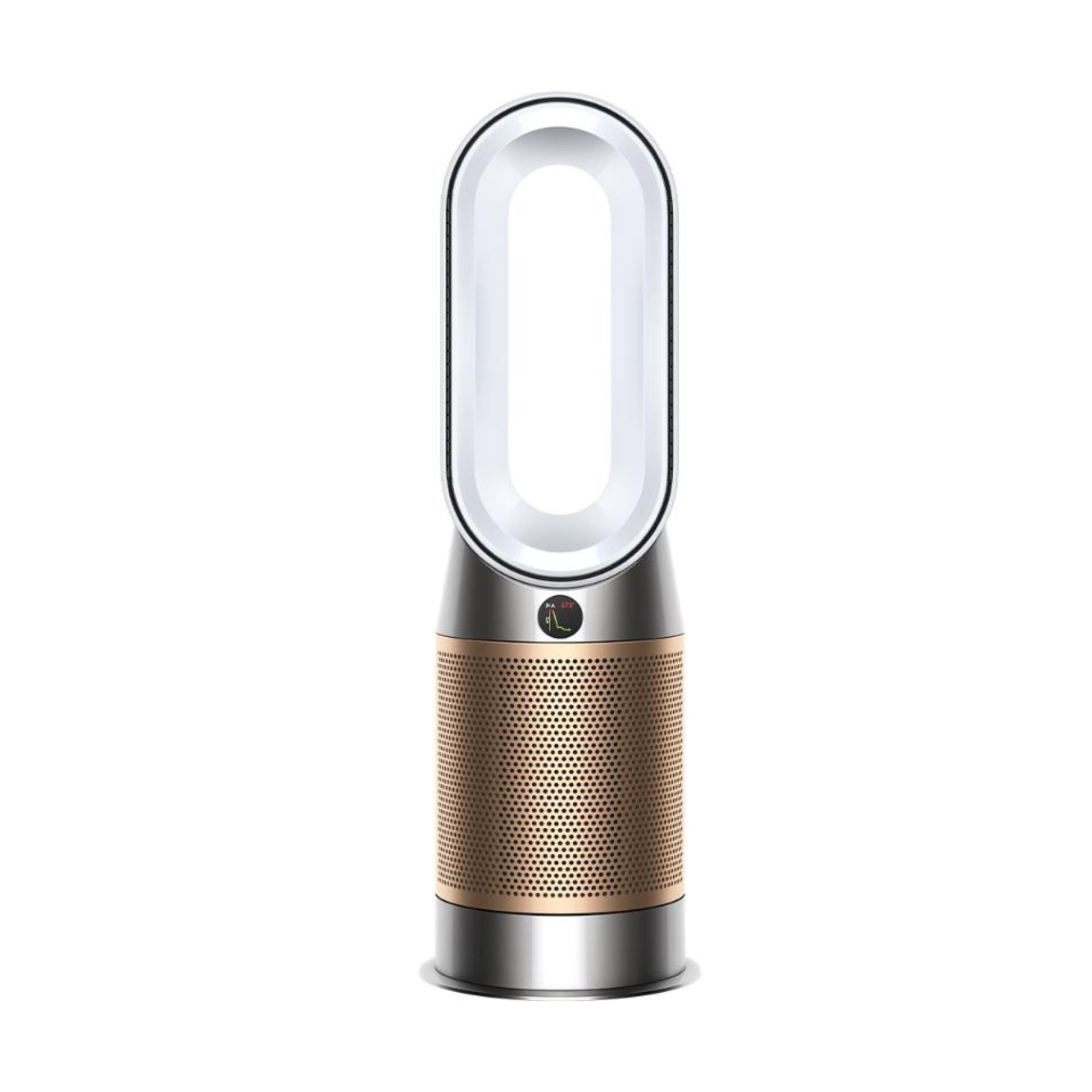
Best air purifier and fan
This is a formidable appliance: it looks beautiful, works as a hot and cold fan, and removes some of the trickiest toxins in the air. It's on the expensive side, but a luxury worth indulging in.
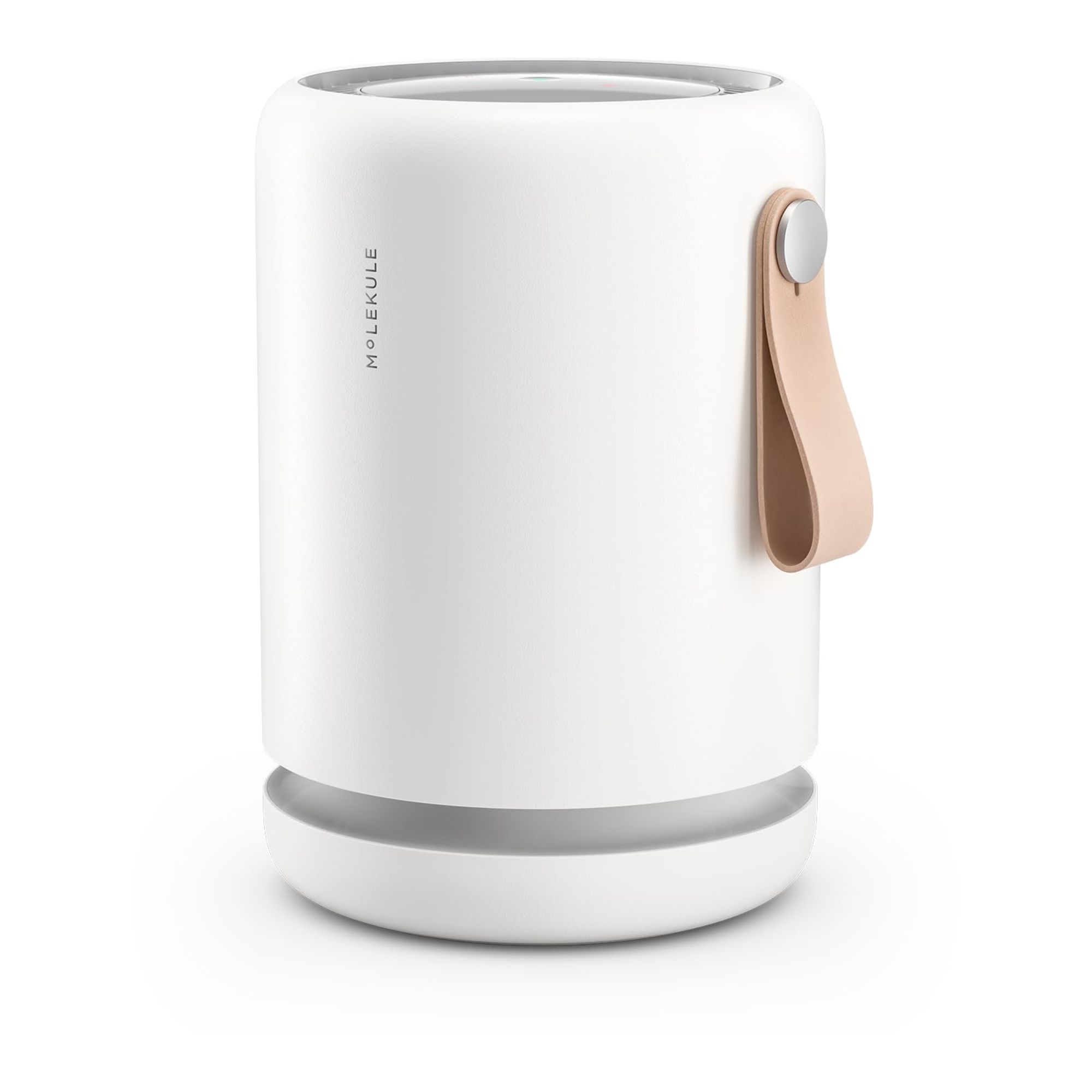
Best for allergies
Rather than trapping dust and allergens, this actively destroys them and it's one of the only models to do so. The smart app gives you lots of feedback and it wins big points for style too.
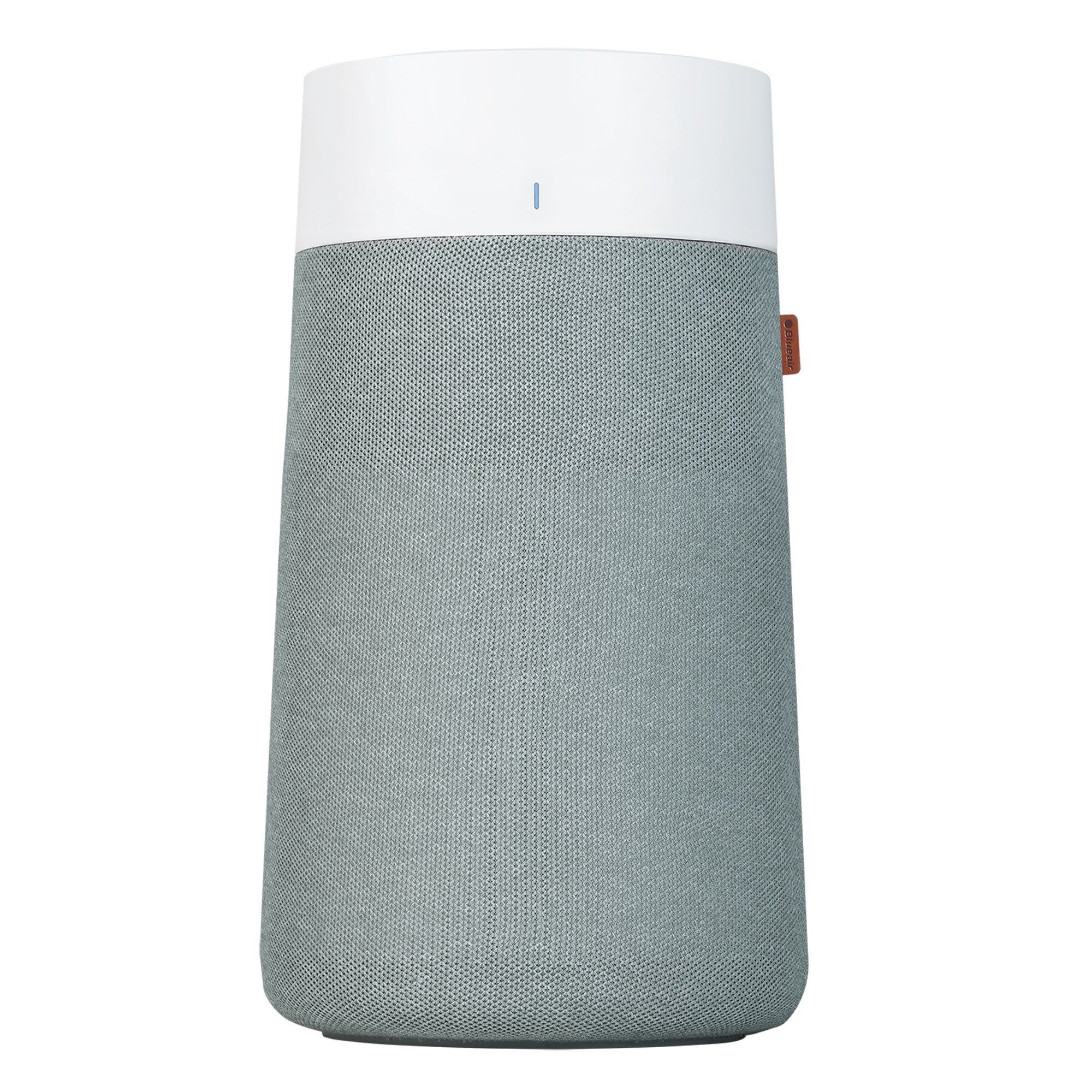
Best for pet homes
Affordable and effective, the BlueAir removes pet hair and dander with a clever, washable filter. It's quick to respond and effective at removing bad smells from the air.
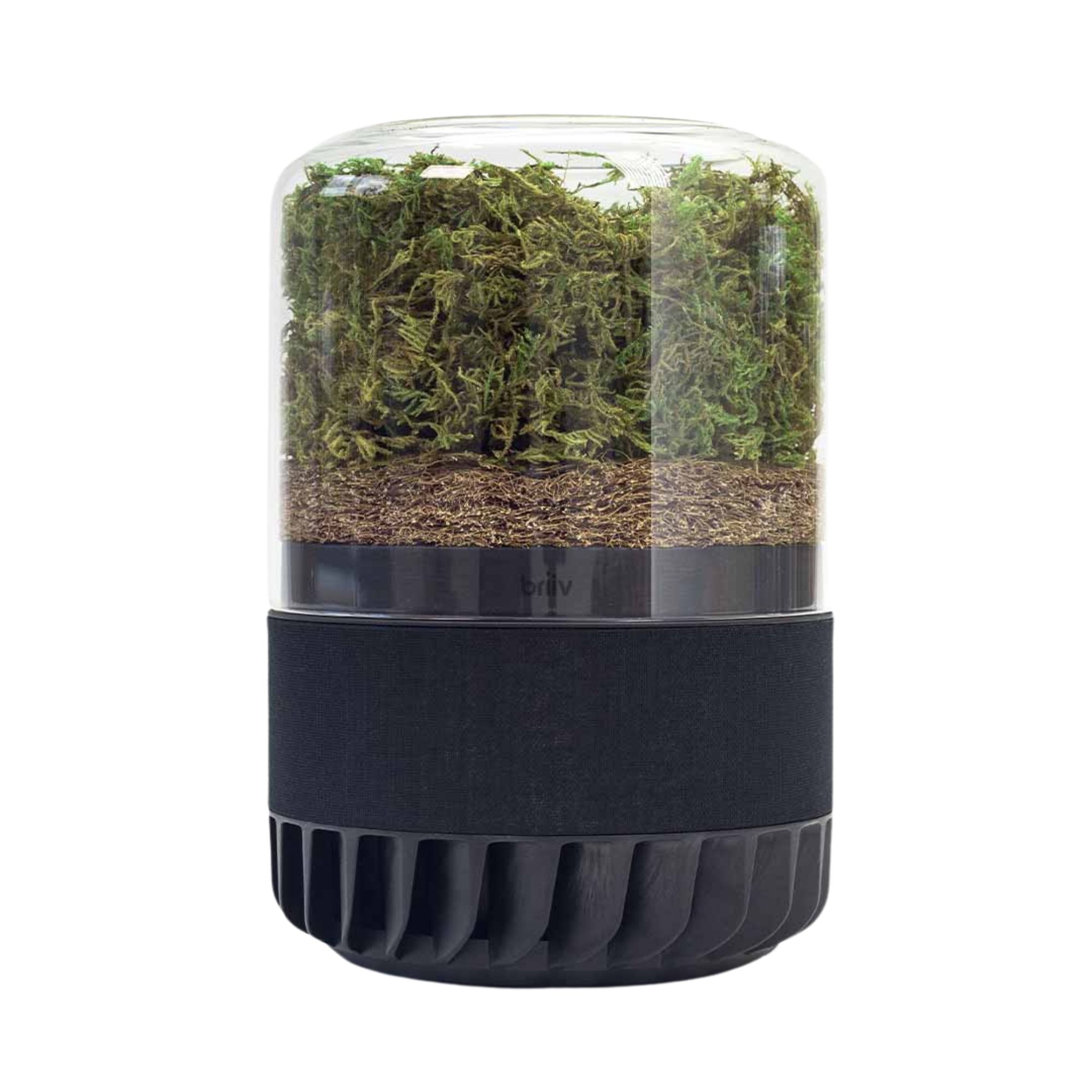
Best natural
Crafted from moss, coconut, and carbon, this natural air purifier is stylish and sustainable. It's perfect for small rooms, especially because it's beautiful enough to show off.
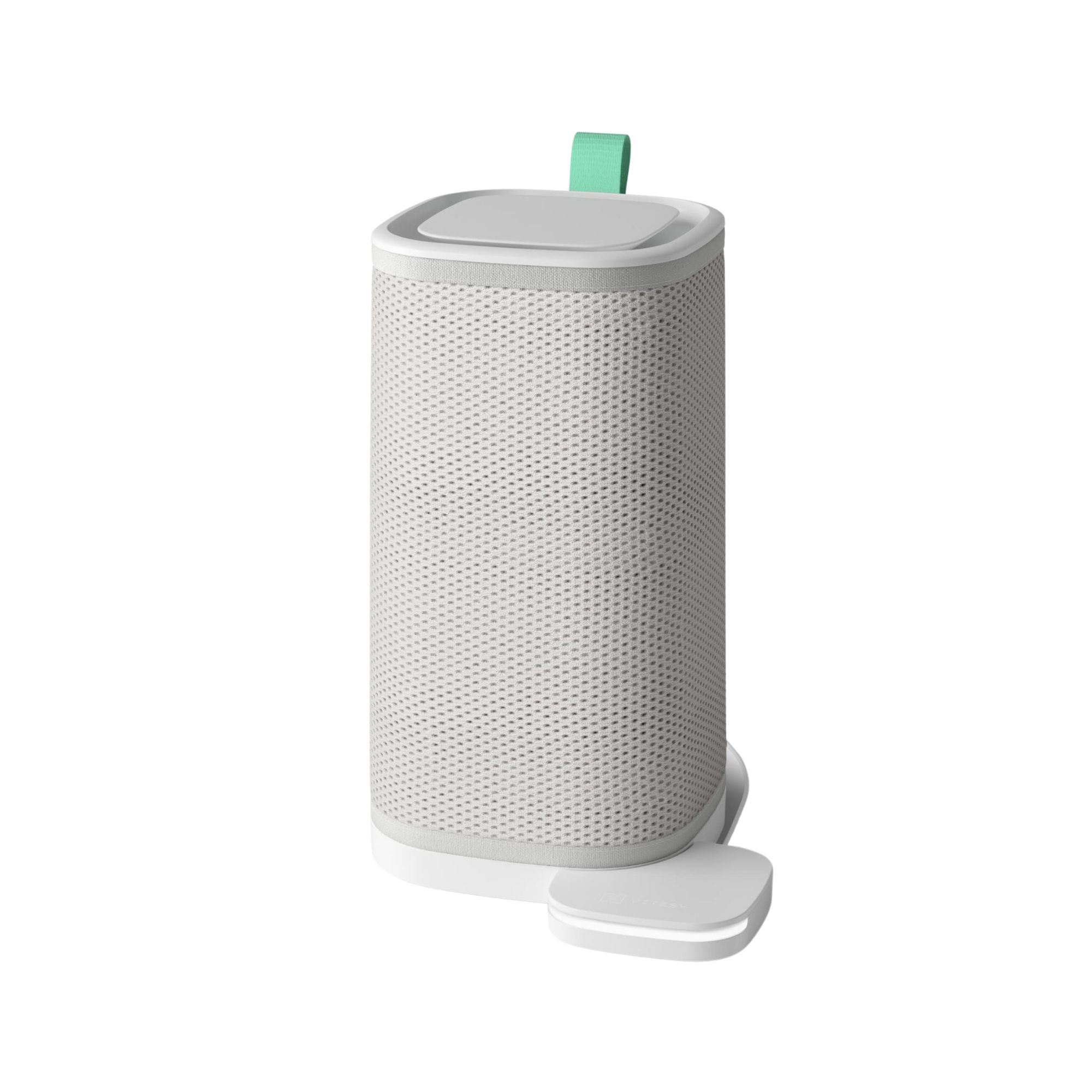
Best for every room
No bigger than a waterbottle, the Eteria is mini but mighty. It gives feedback on humidity, impurities, and other room conditions, which out-detail models three times the size.
The 6 best air purifiers, tested for cleaner air
Best air purifier overall
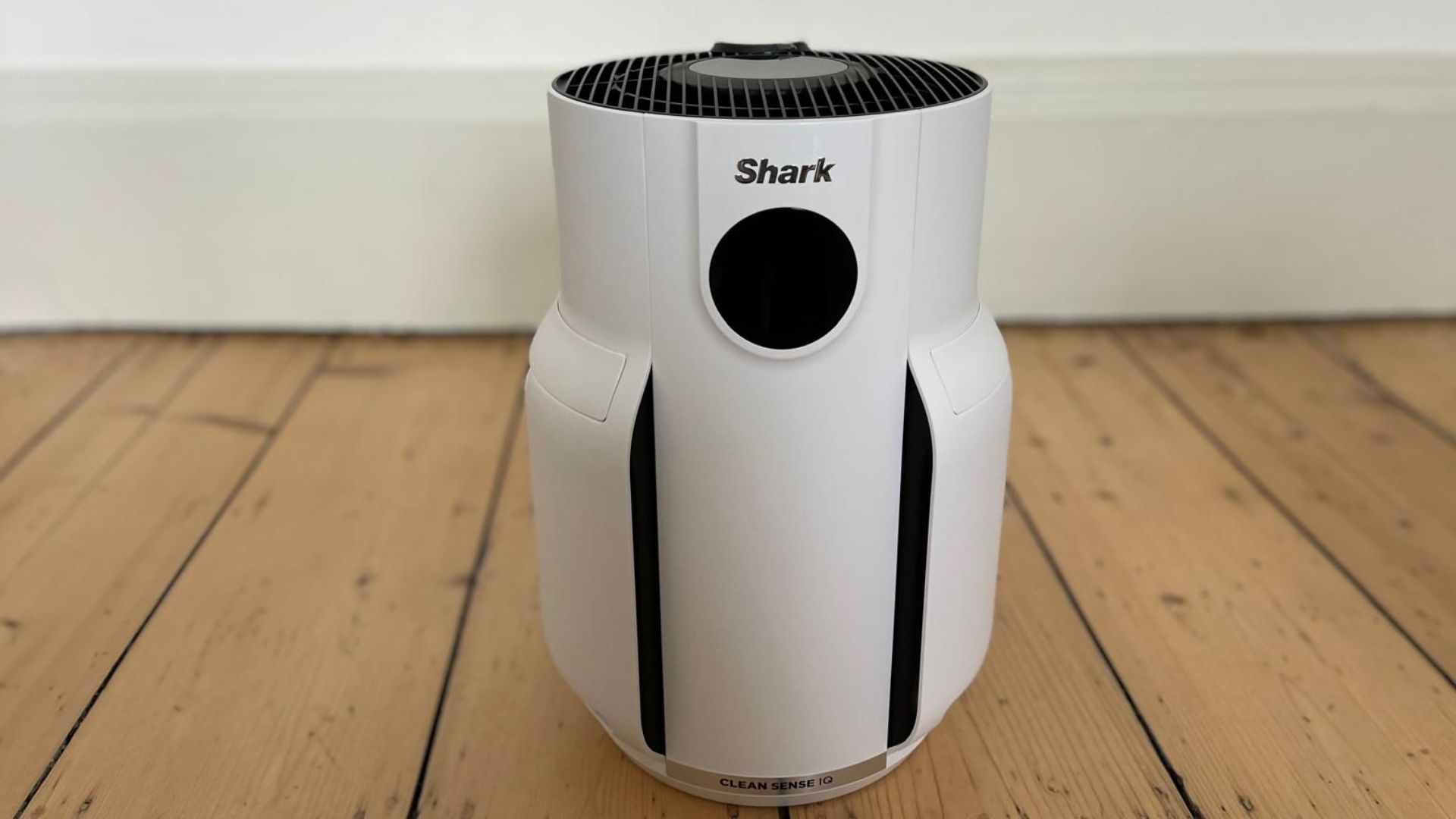
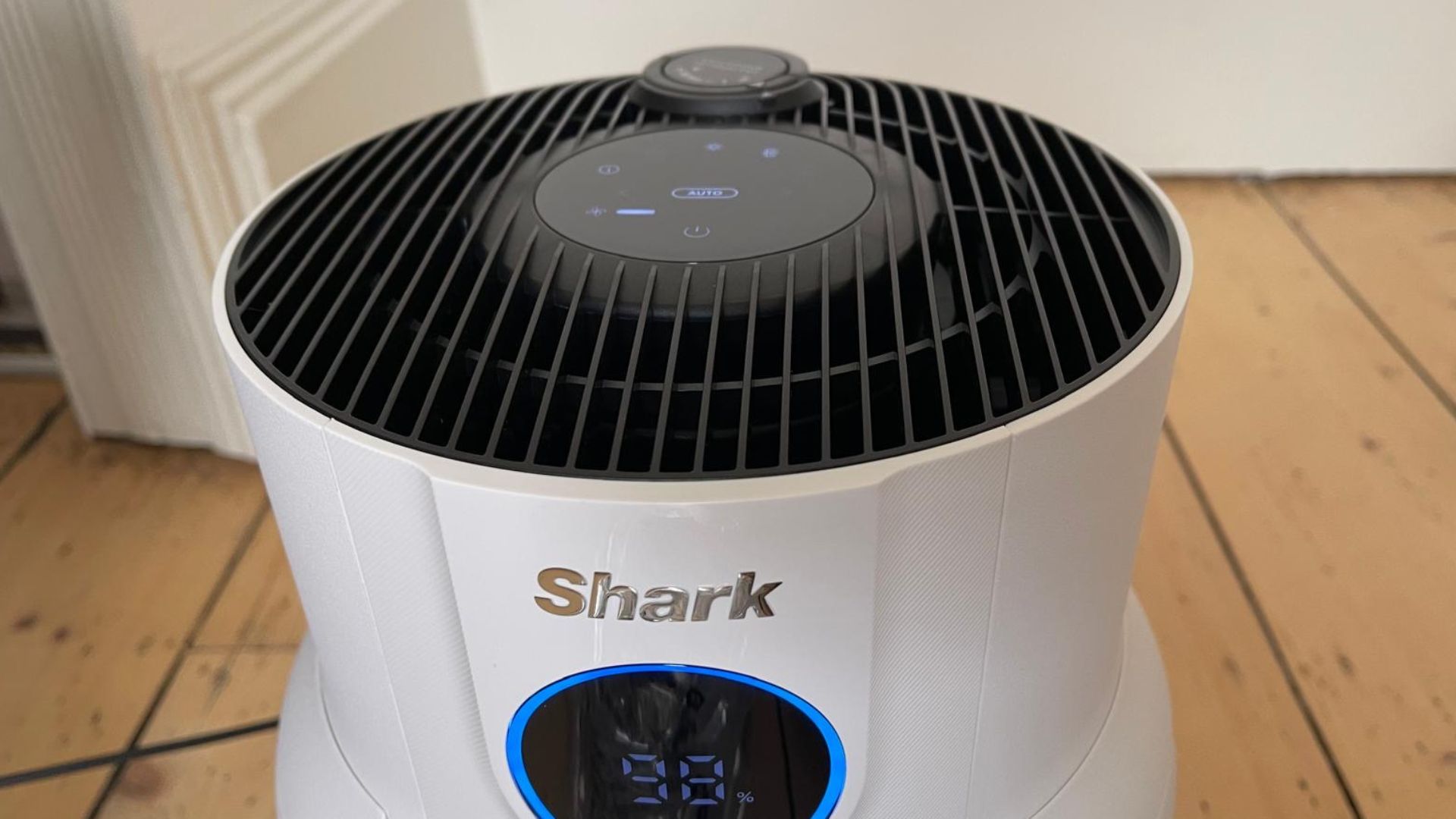

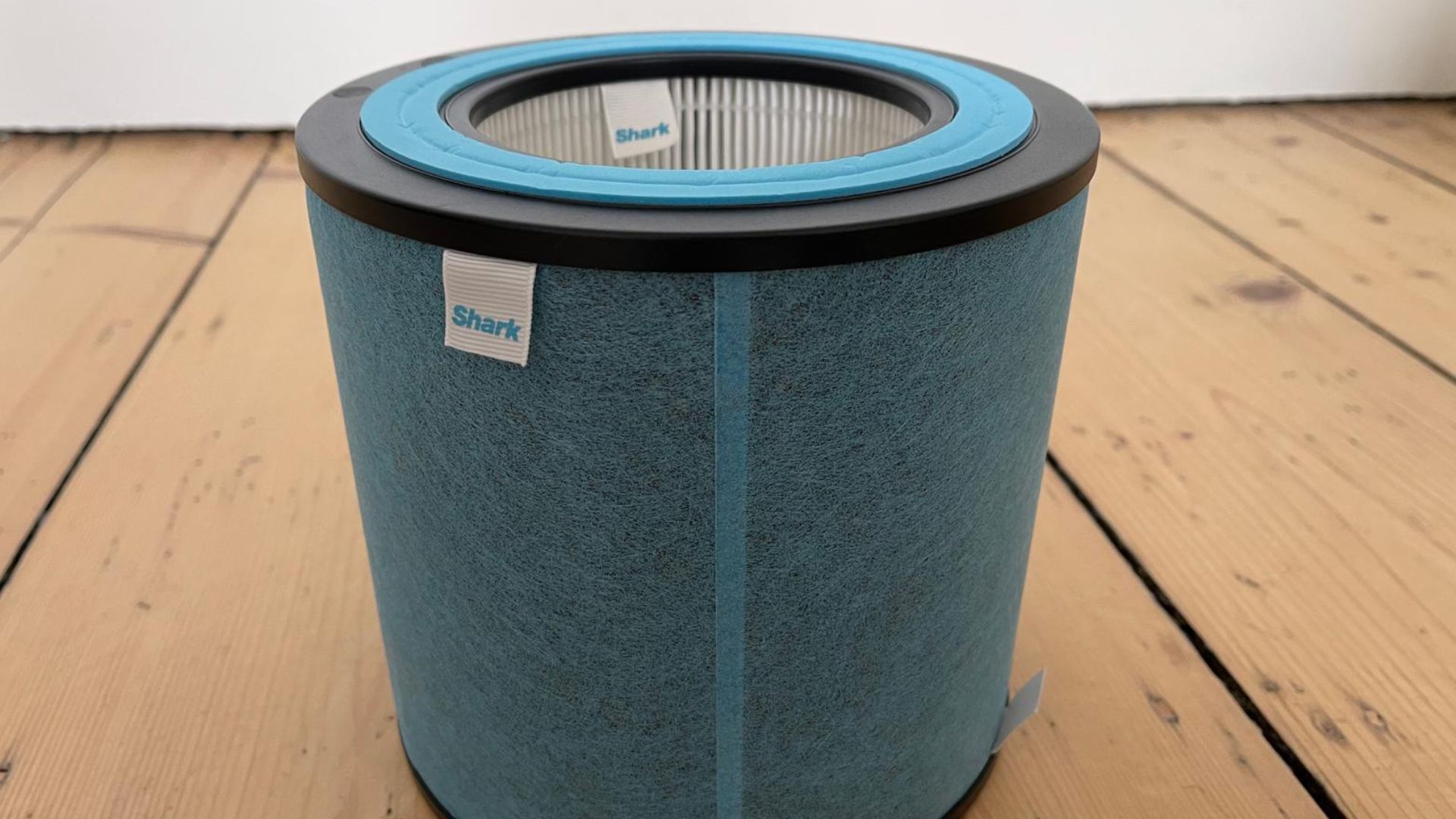
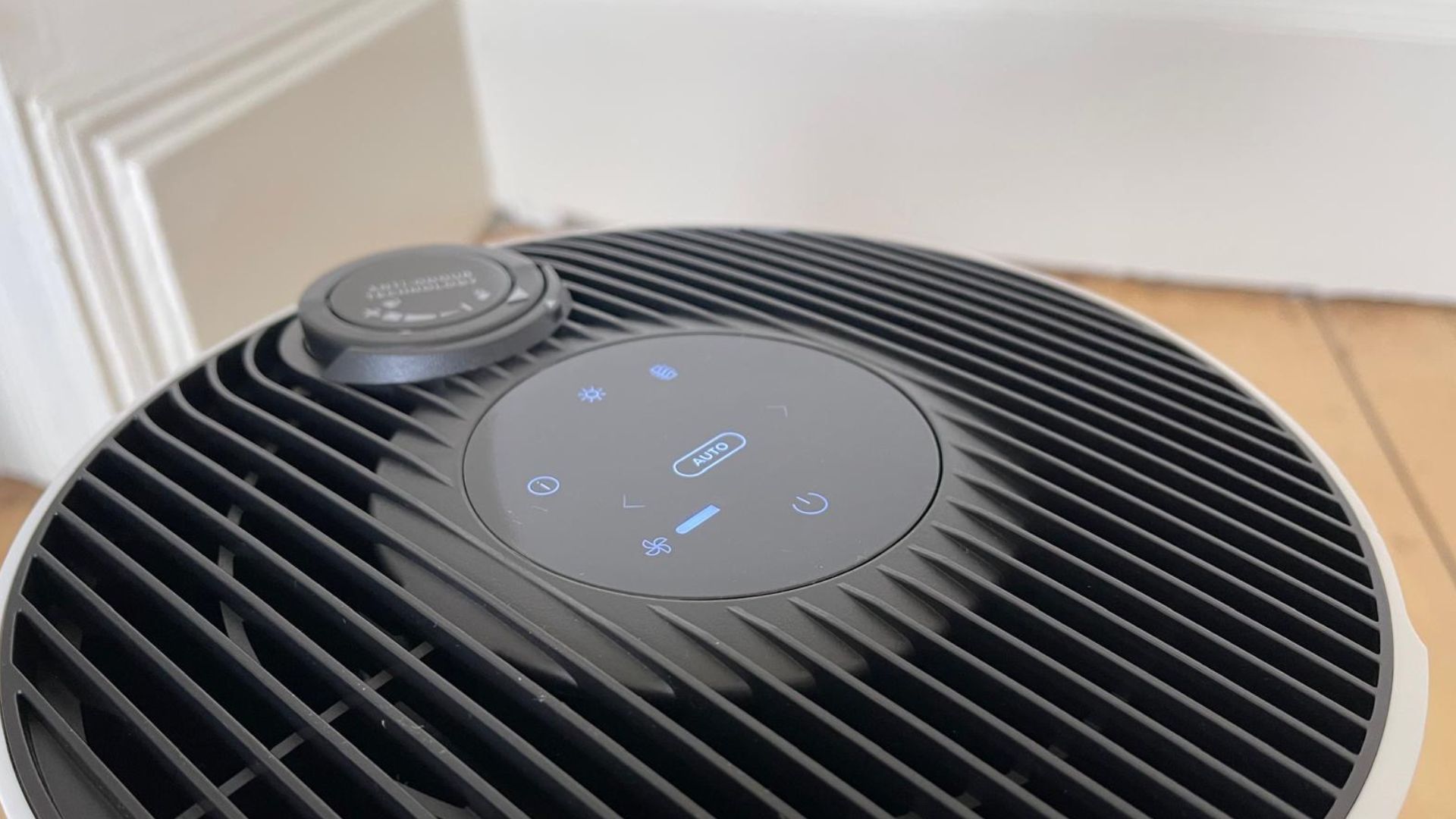
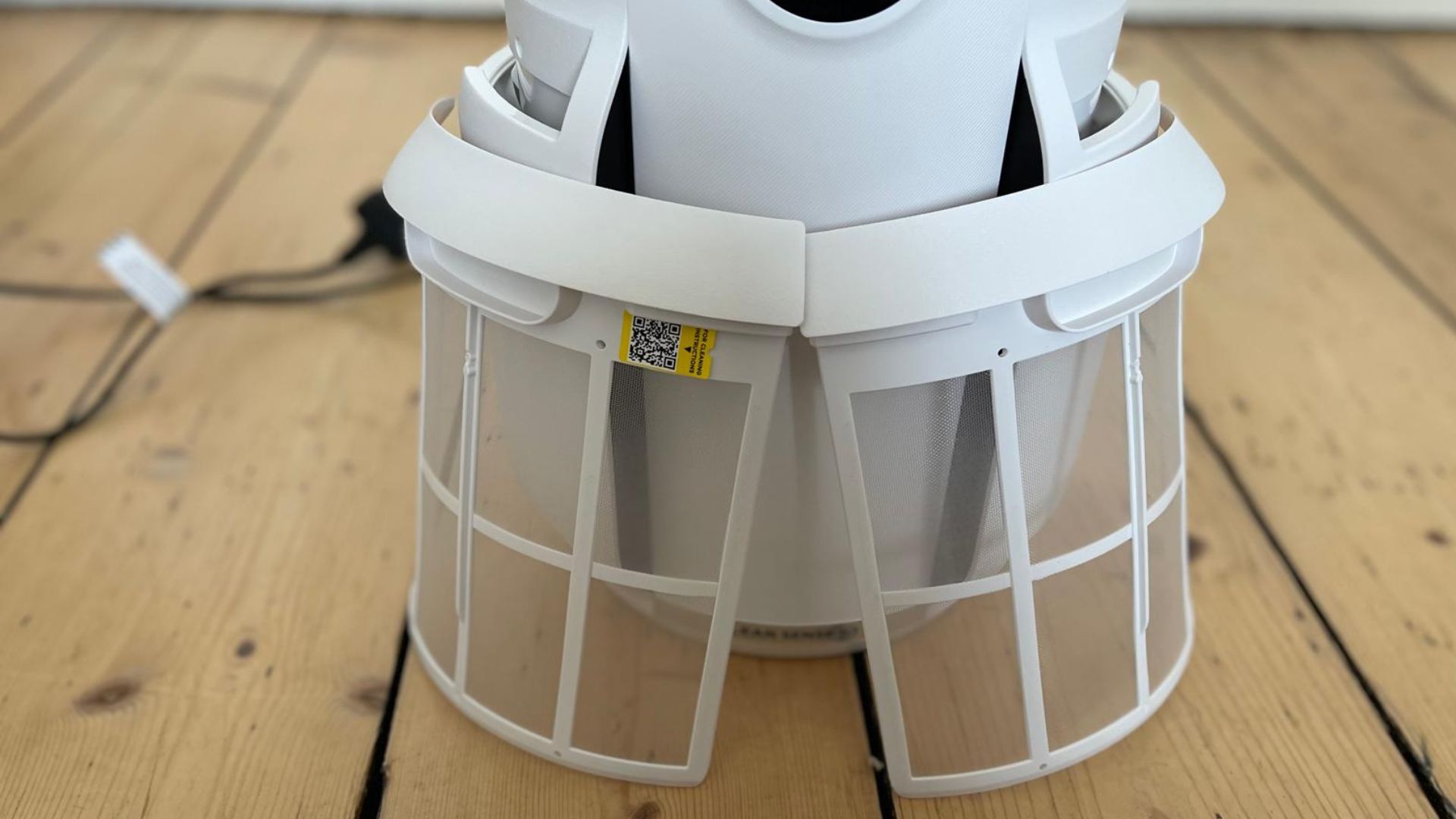
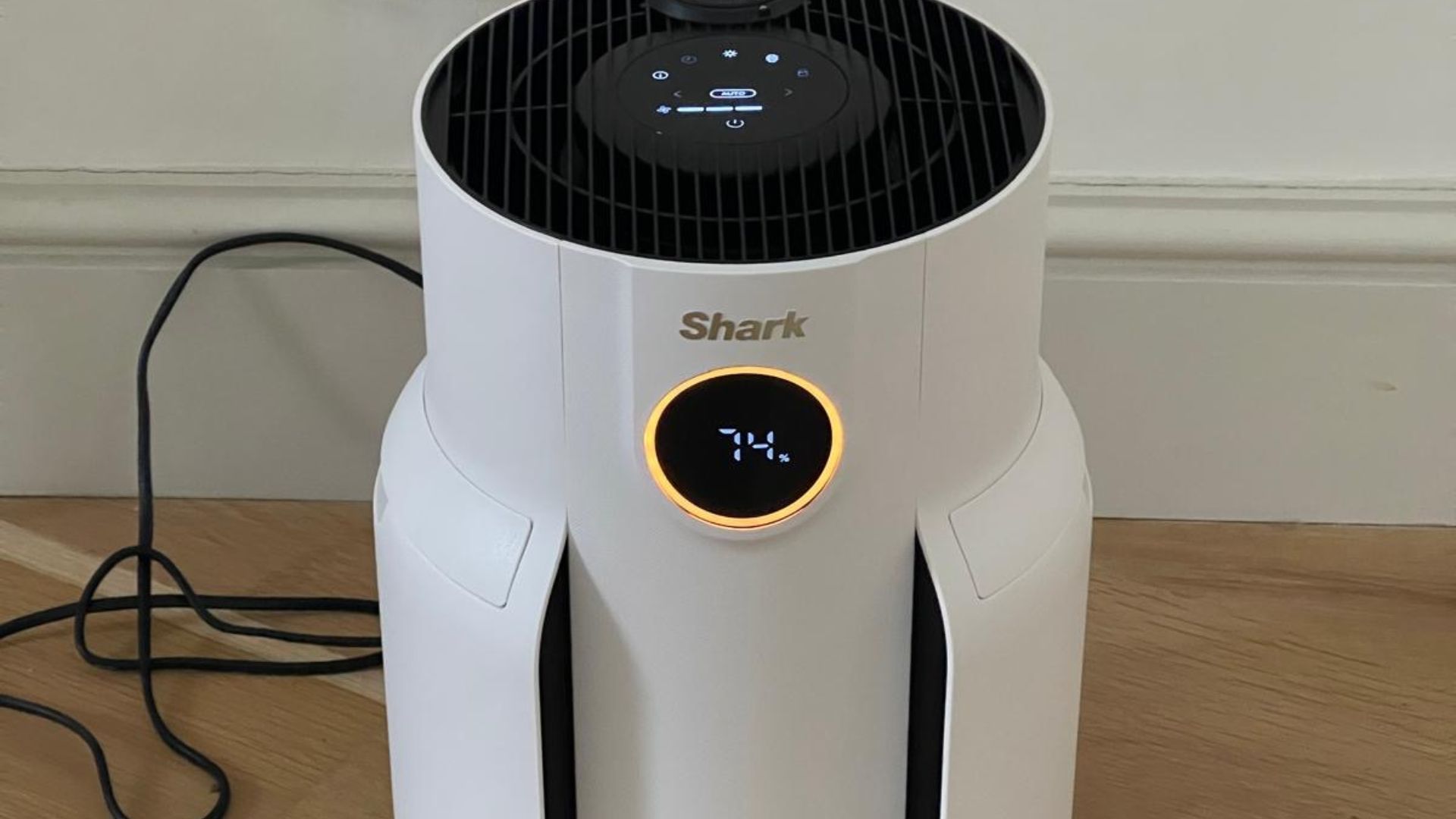
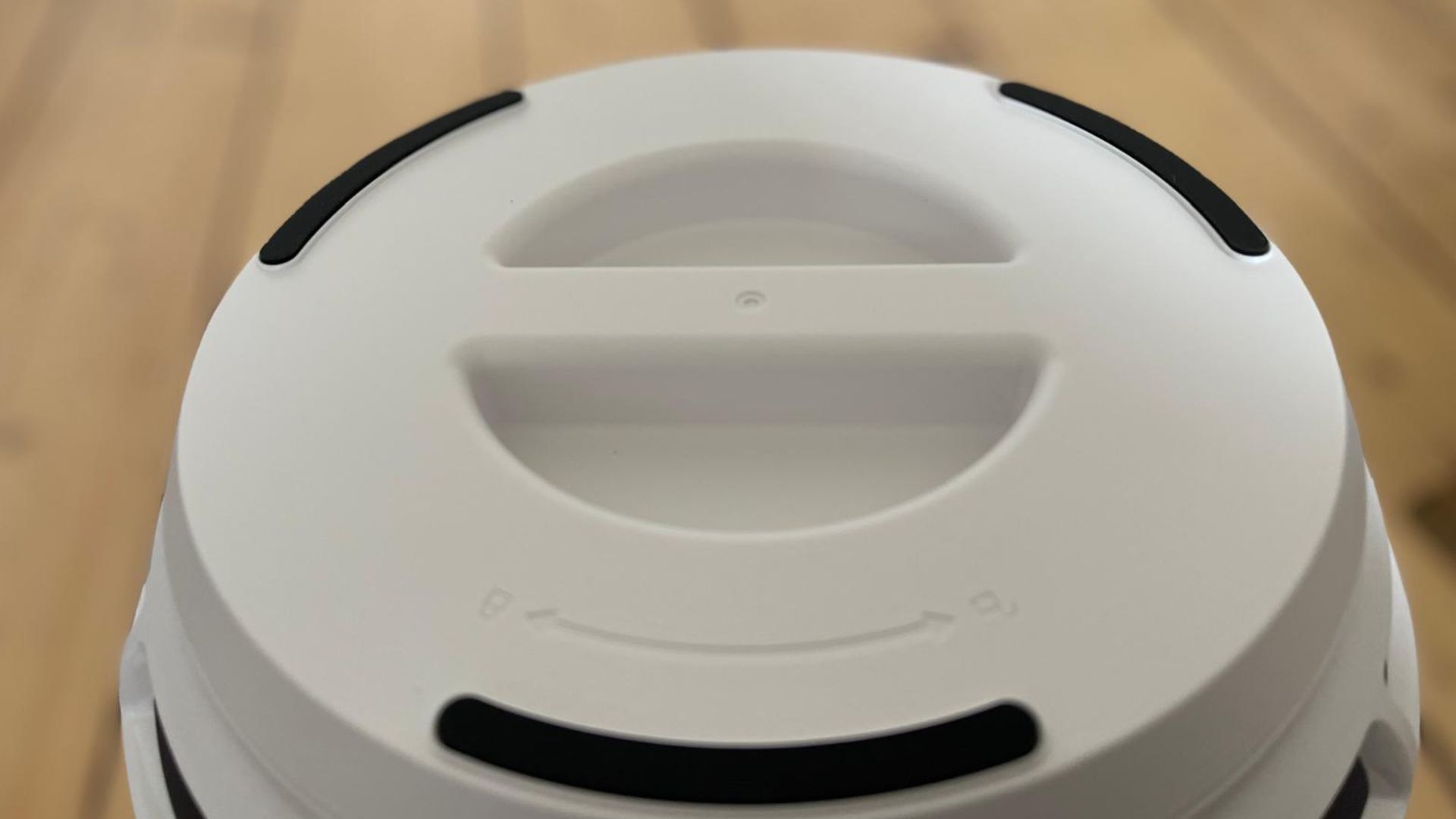
Specifications
Reasons to buy
Reasons to avoid
You'll know Shark for their Dyson-rivalling vacuum cleaners, so it makes sense that they're stepping in to the air purifying market. This earned itself the top spot in our buying guide fir a number of reasons: the simple, yet smart design; straightforward controls; and highly effective performance. Unlike many competitors, it also features DirtDefence guards, which help trap larger particles before they reach the main filter—extending the lifespan of your filter, which saves you money and gives you cleaner air too.
For me, the standout feature is the Shark NeverChange's intuitive display. Lots of air purifiers hide their monitors on an app or behind tiny LED lights that leave you guessing, but the Shark NeverChange gives clear, real-time feedback with a number out of 100 and a colour score. It's easy to adjust the fan speeds and slip into different settings (auto and sleep mode are options), delivering on every part of the fuss-free, stress-free experience.
I burnt toast, sprayed leave in shampoo, cooked, lit candles, had my dog passing by and nothing seemed to phase the NeverChange. It was quiet and efficient across the board. And, whilst it might not be the most stylish appliance (I've seen it compared to a futuristic bin), let's be honest, air purifiers are rarely style statements. More importantly, what it lacks in the looks department, it makes up for in performance and price, making it a practical, no-nonsense choice for cleaner indoor air.
You can find out more in my full Shark NeverChange5 Air Purifier review.
Best air purifier and fan
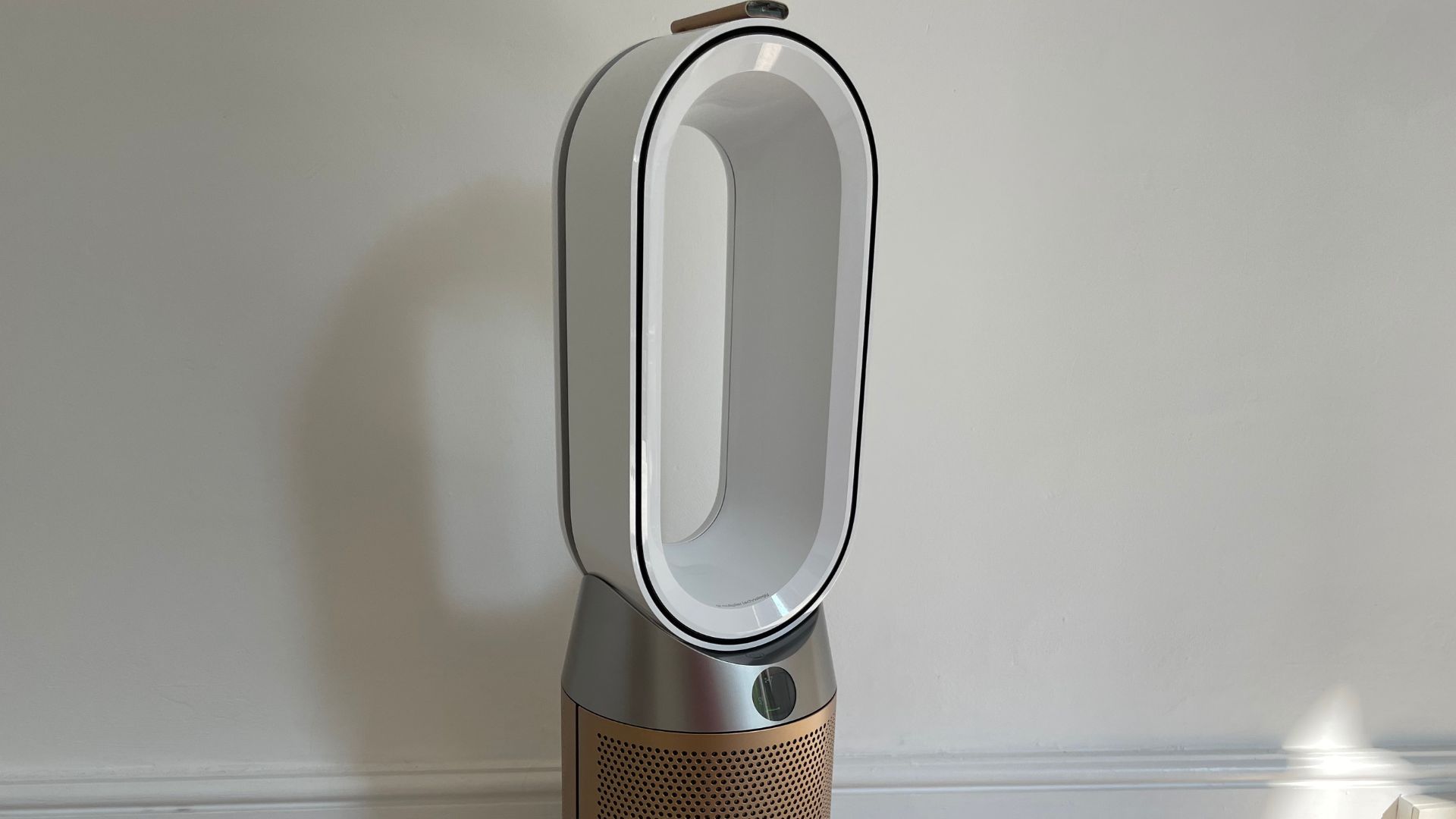
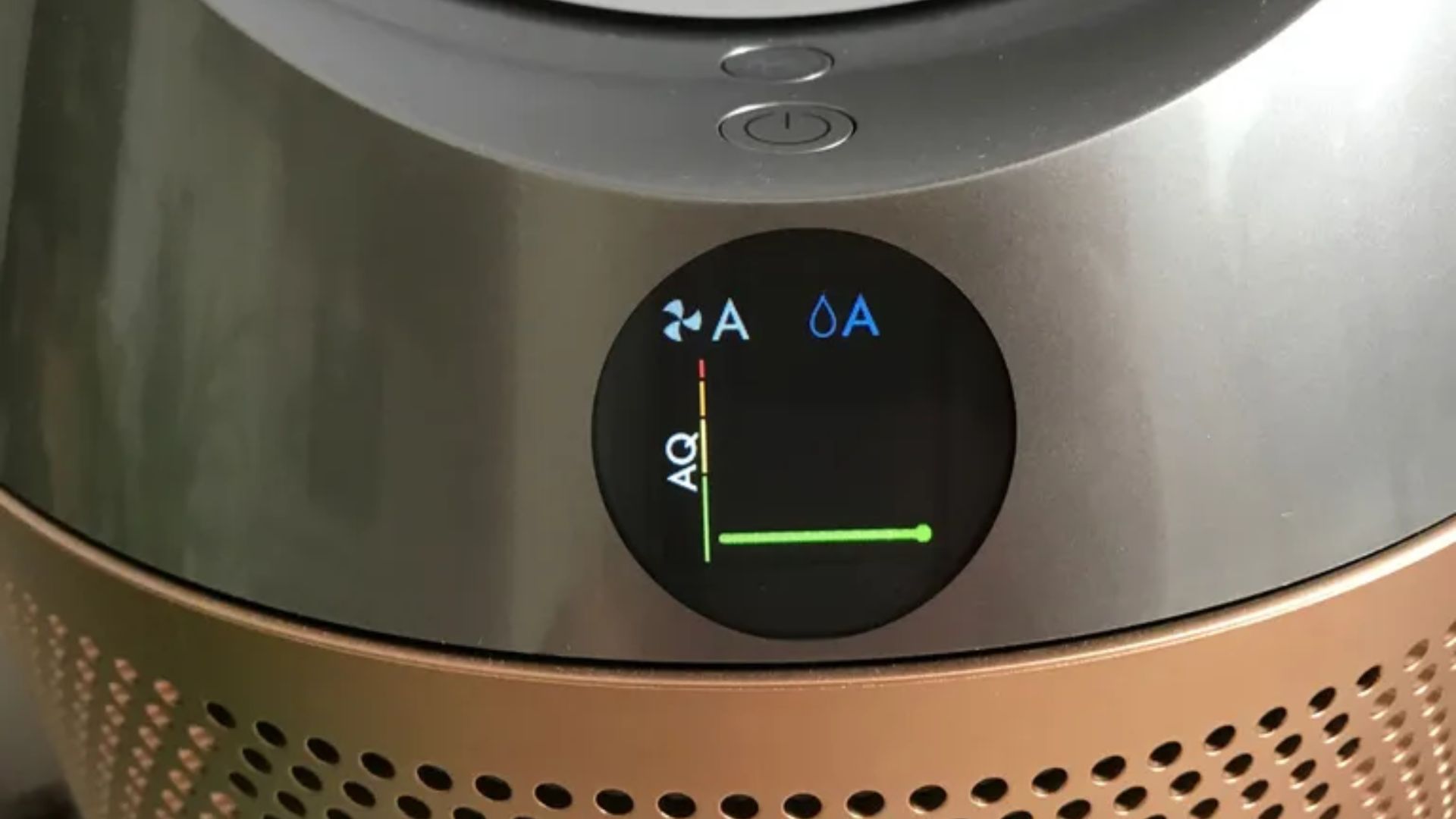
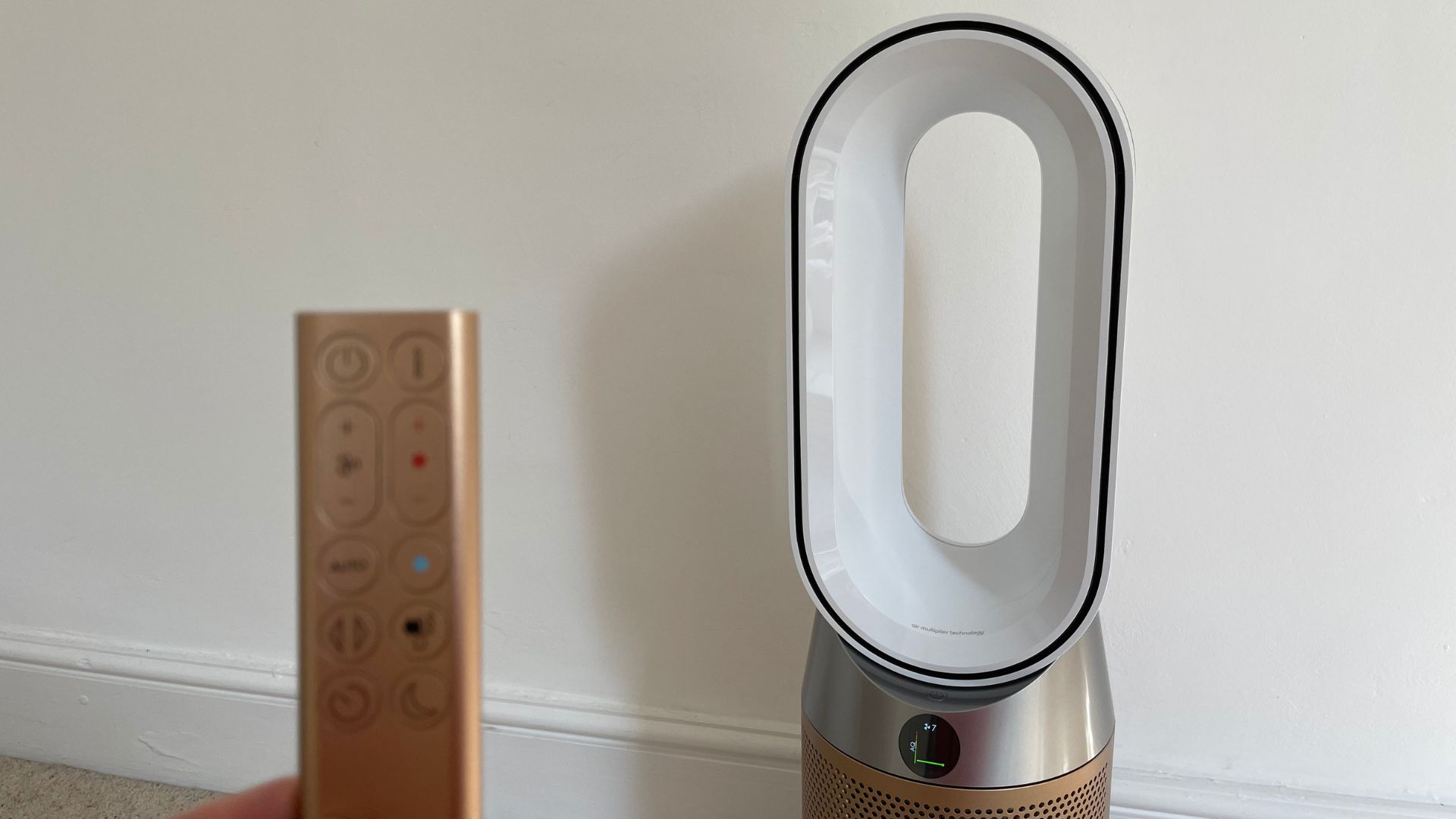
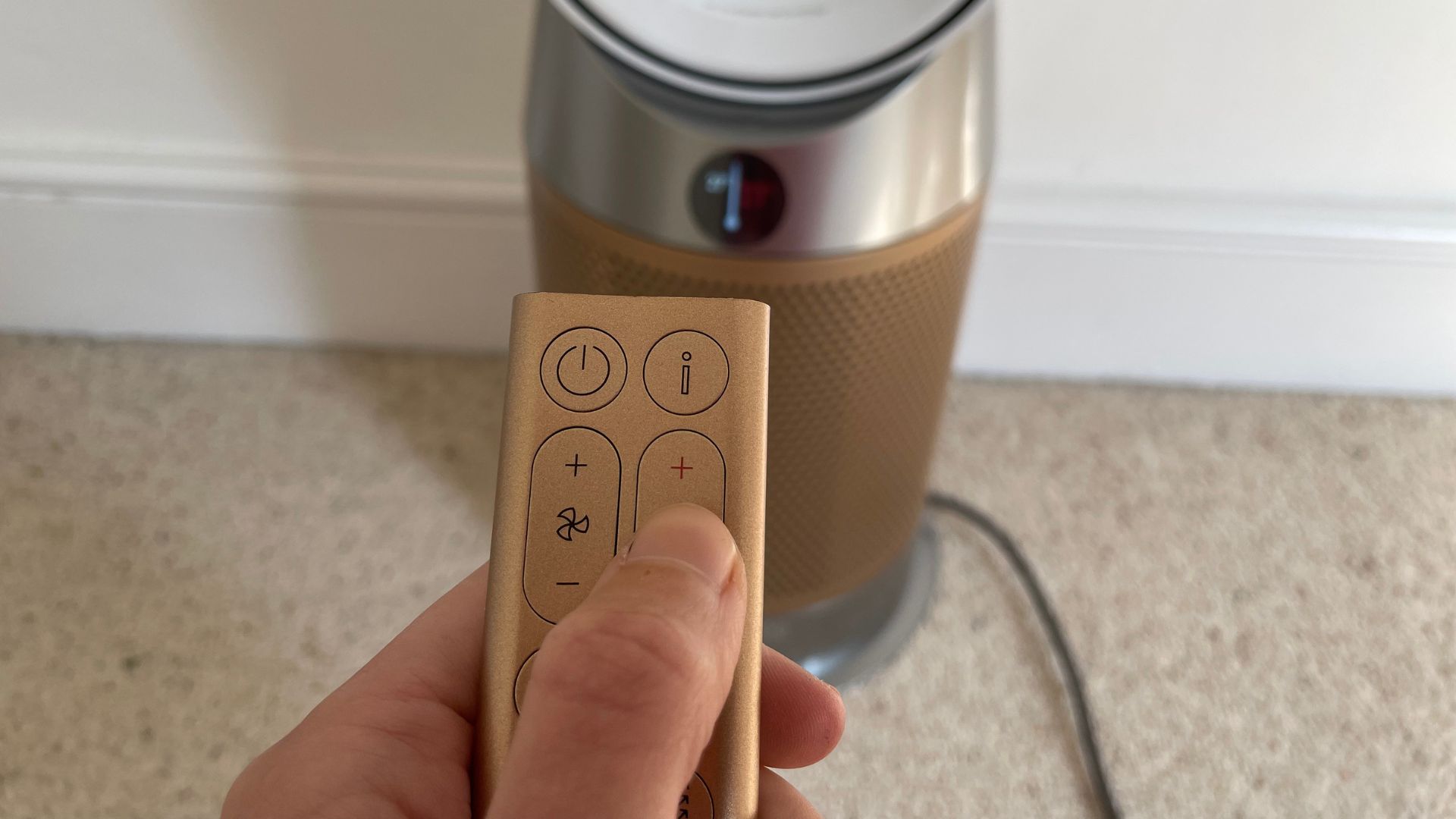
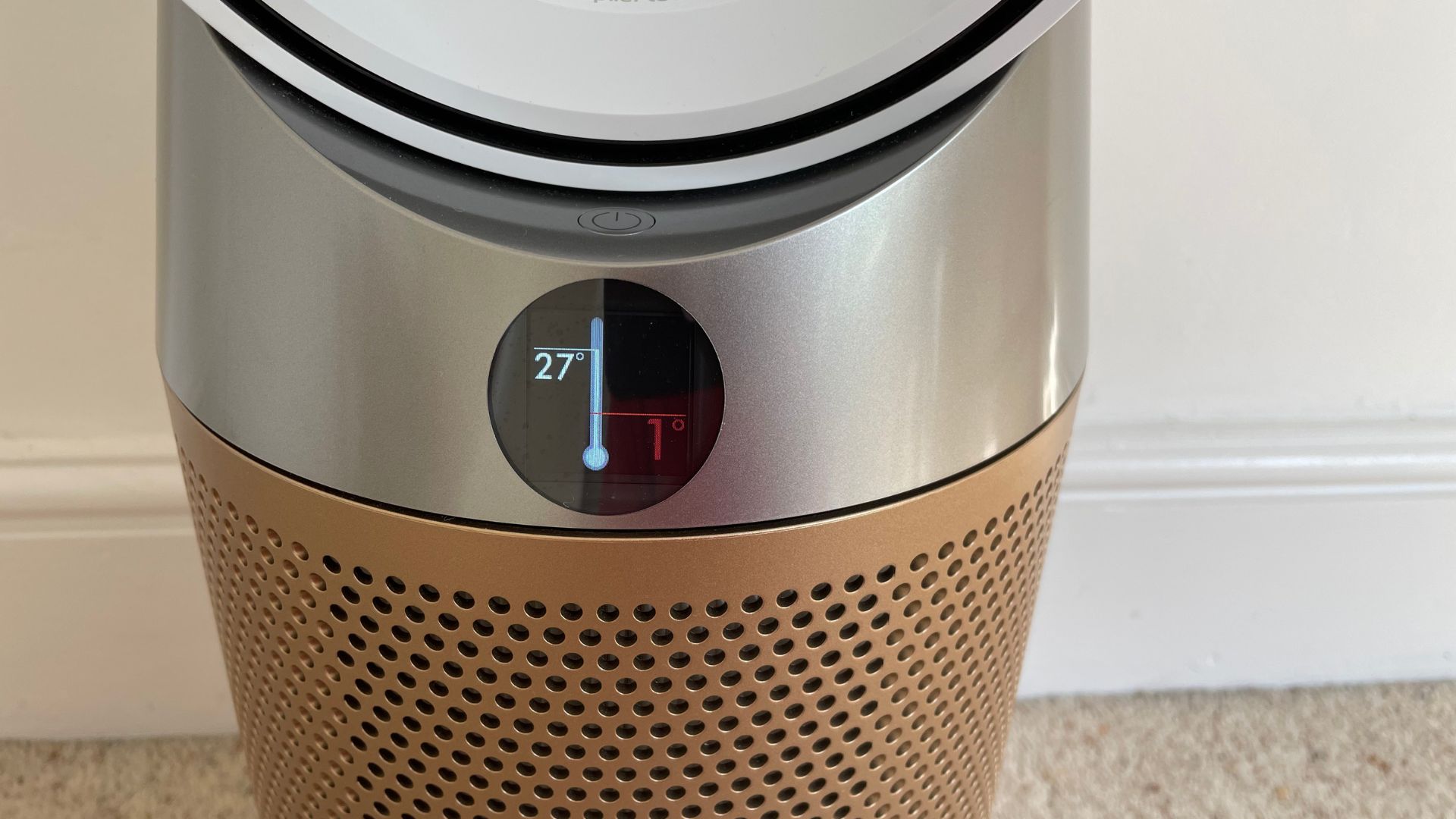
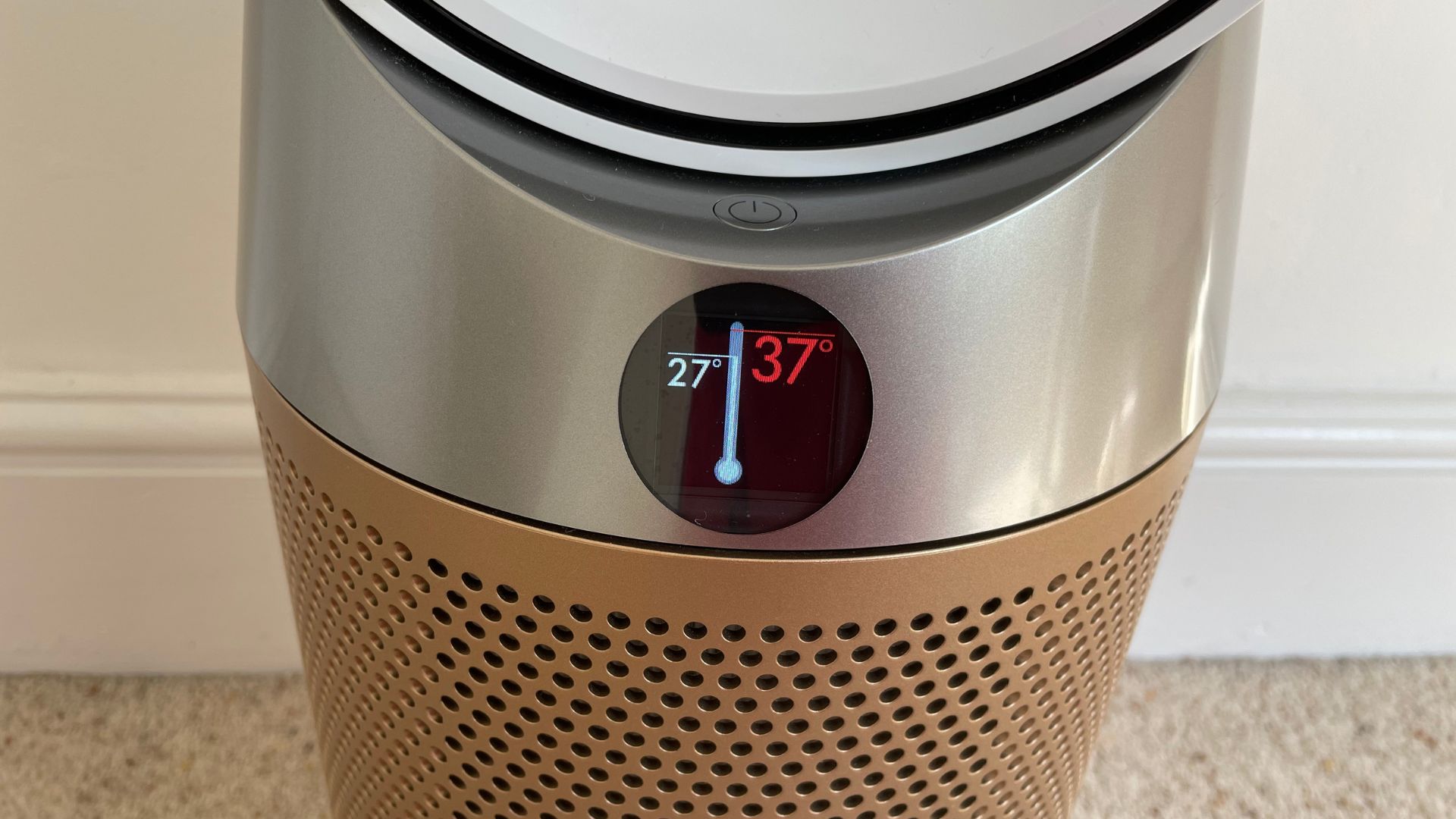
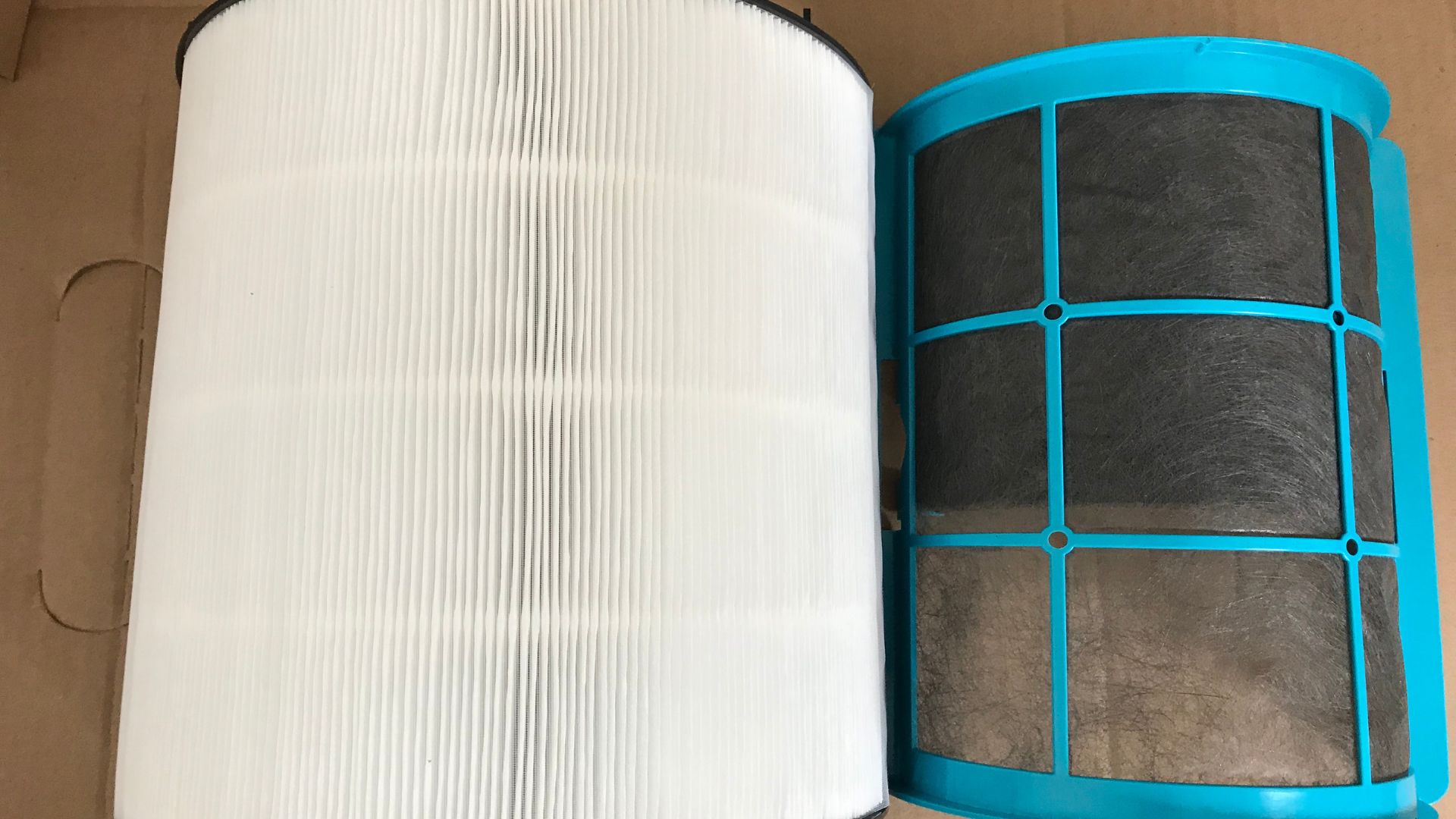
Specifications
Reasons to buy
Reasons to avoid
A stylish, luxurious option, the Dyson Purifier Hot + Cool Formaldehyde is the one everyone would but if money was no object. The name isn't the most user-friendly, but if I break down the Dyson Purifier Hot + Cool Formaldehyde, it'll make more sense. The Hot + Cool explains that it doubles-up as a fan for your living space. It rotates and silently blows air into the room in a way that's as effective as it is efficient. Then, you have the Formaldehyde part. These emissions are rarely removed by your basic fans, but they're released from new furniture, fabrics, and paints, so it's highly likely that they're in your home. This purifier captures formaldehyde (HCHO), ultra-fine dust, allergens, and VOCs as small as 0.1 microns, making it the most powerful choice for cleaner indoor air.
The Dyson Link app enhances its functionality, providing real-time air quality monitoring, breaking down pollutants like PM10, PM2.5, and VOCs, and offering insights into air purity levels. In testing, it worked fast—after assembling a new coffee table, I saw air quality drop, only for the Dyson to restore it to ‘very good’ within minutes. The same applied to aerosol sprays, swiftly clearing pollutants.
Dyson claims this model is 20% quieter, and while it’s near-silent on low settings, at maximum power, it’s loud enough to interfere with TV audio. Beyond purifying, it also heats and cools - it's helped me through some heat waves and cold spells.
You can find out more in Laura's full Dyson Hot + Cool Formaldehyde review.
Best air purifier for allergies
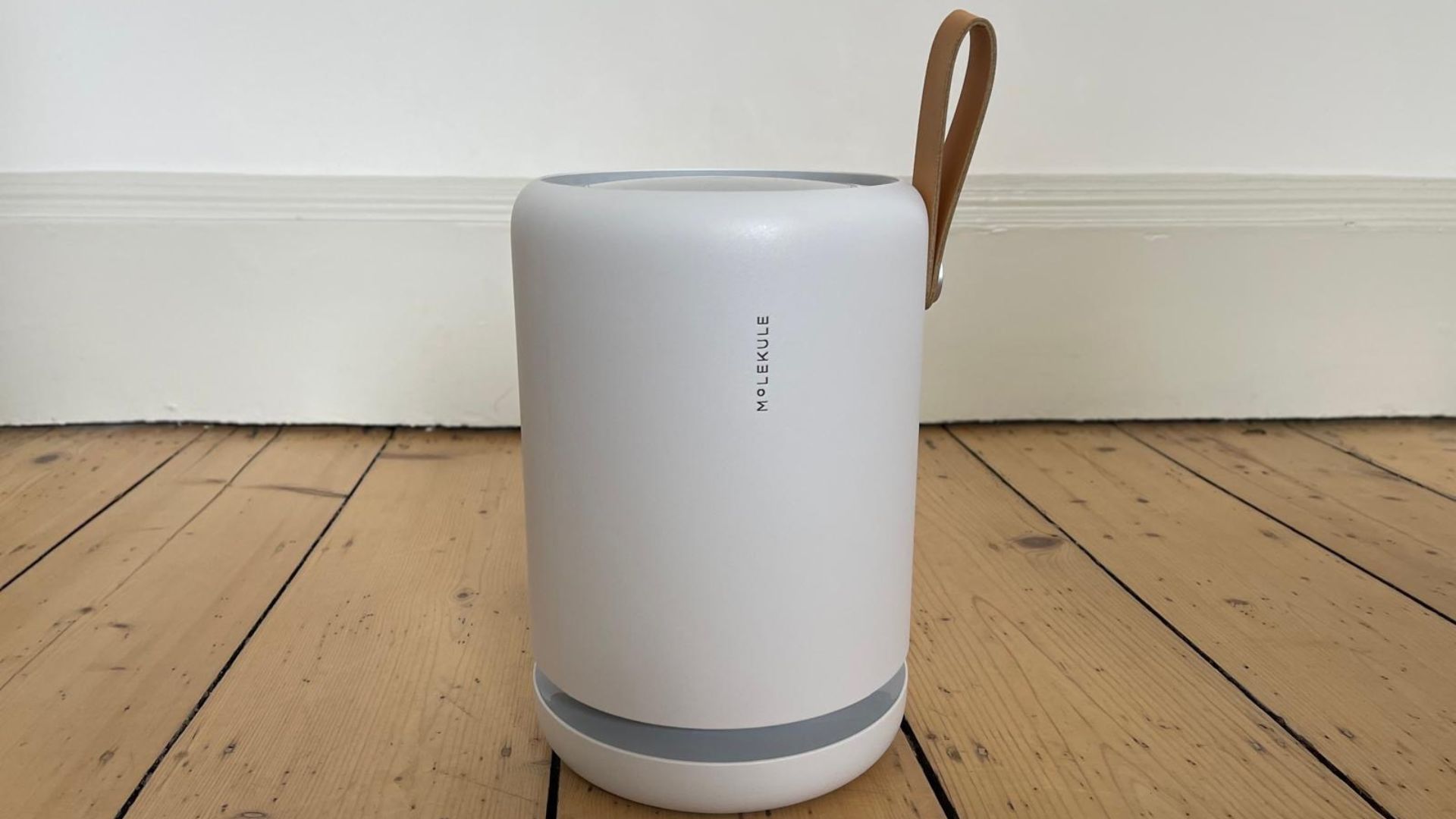
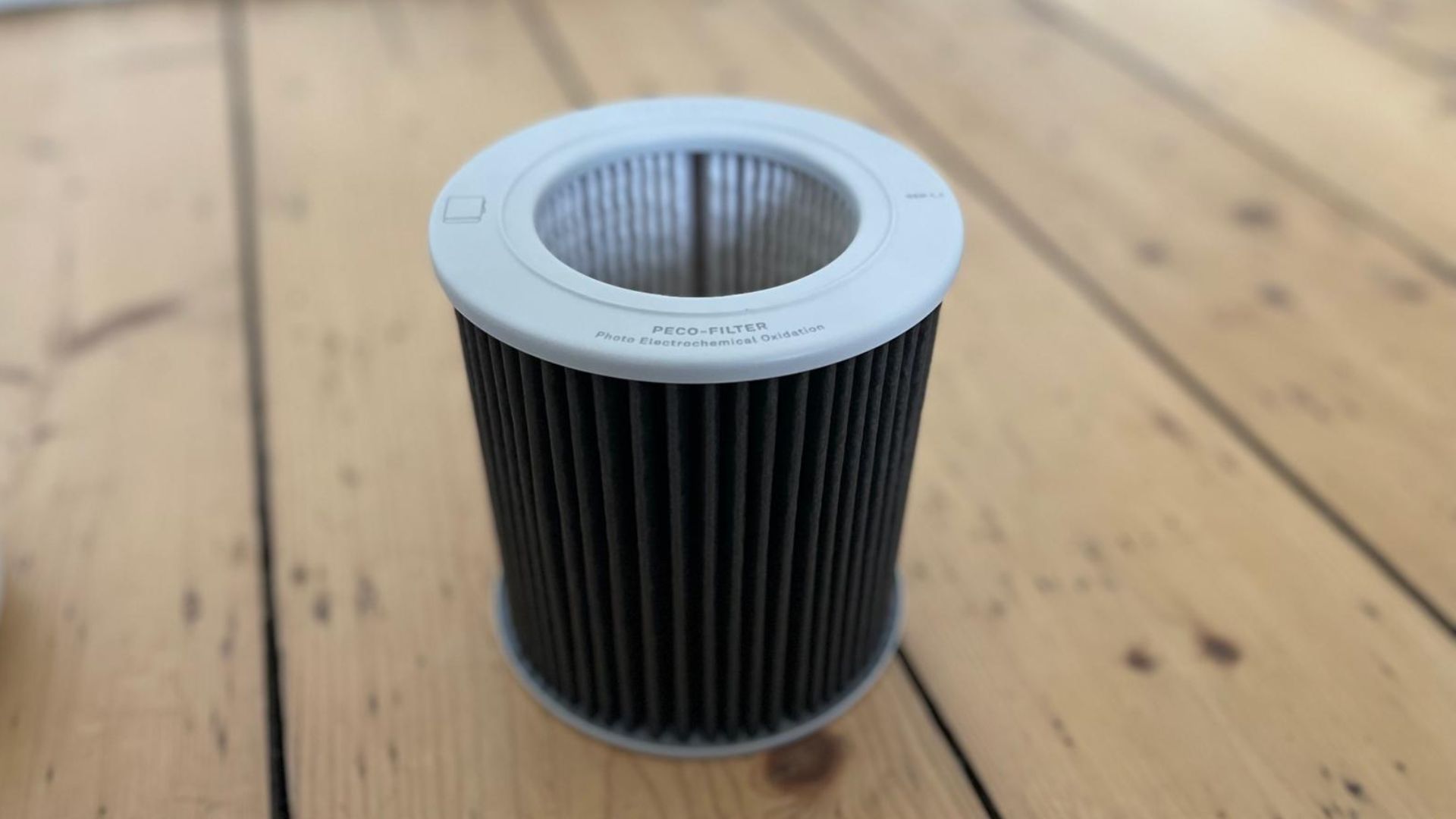
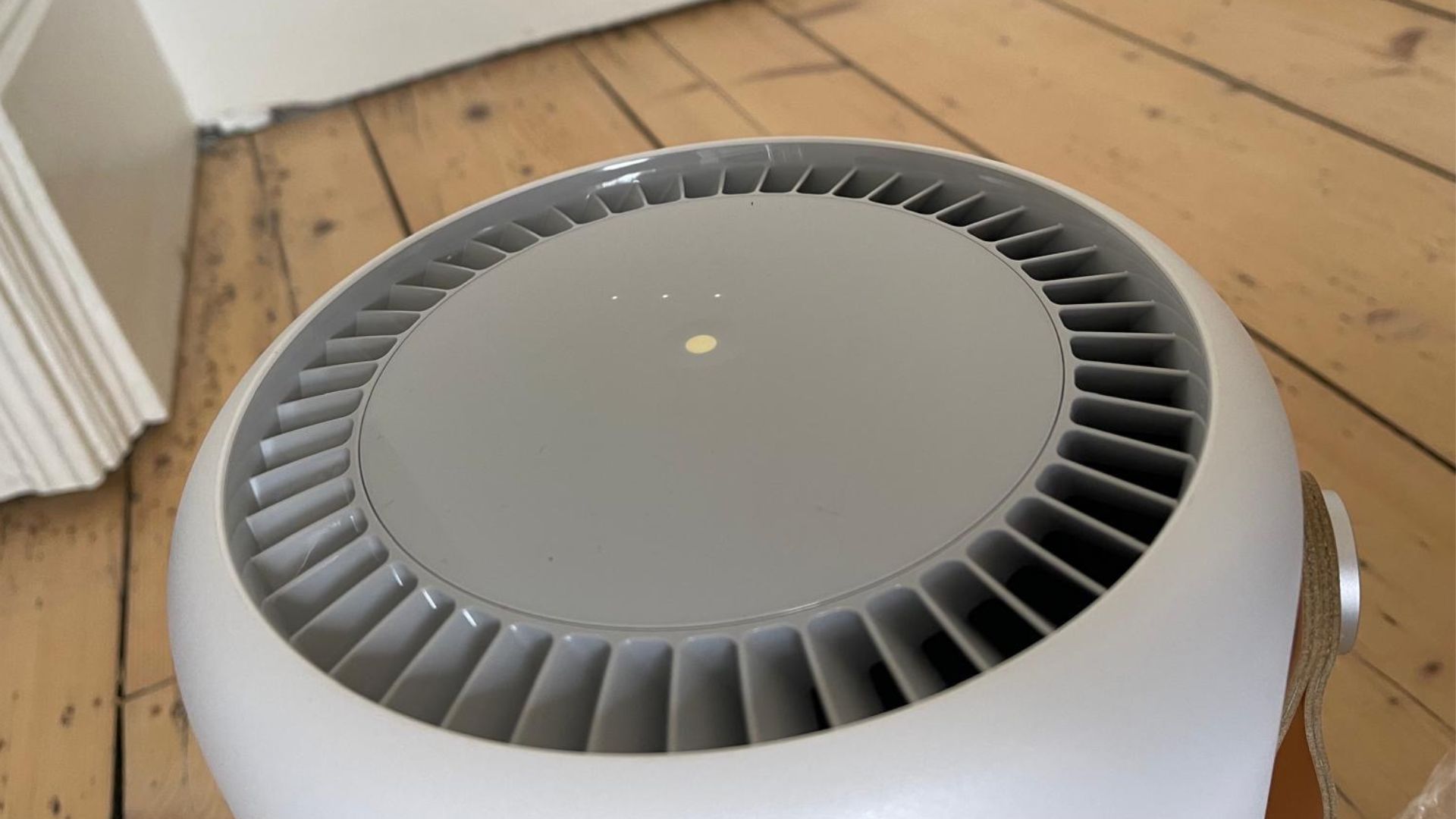
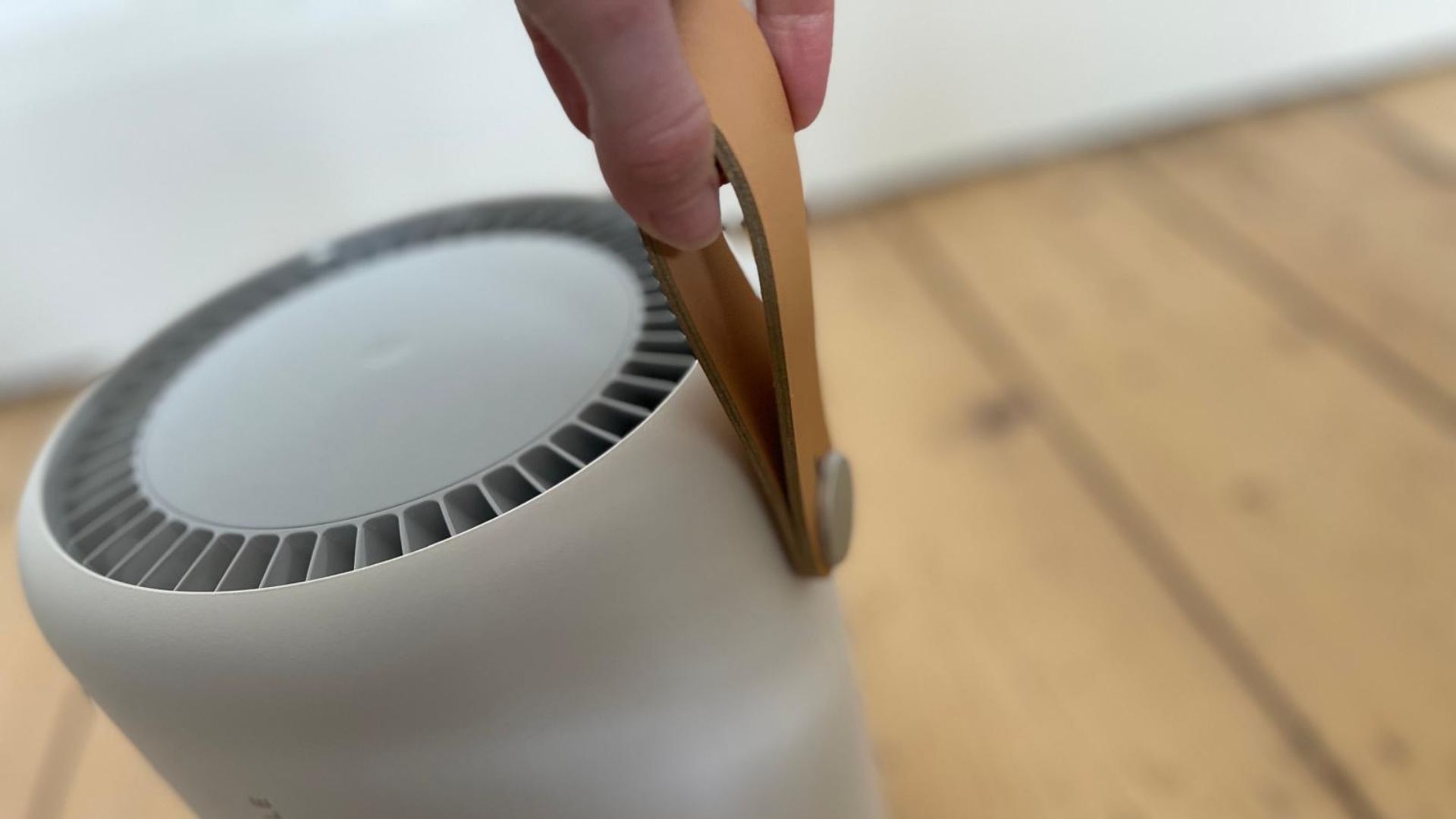
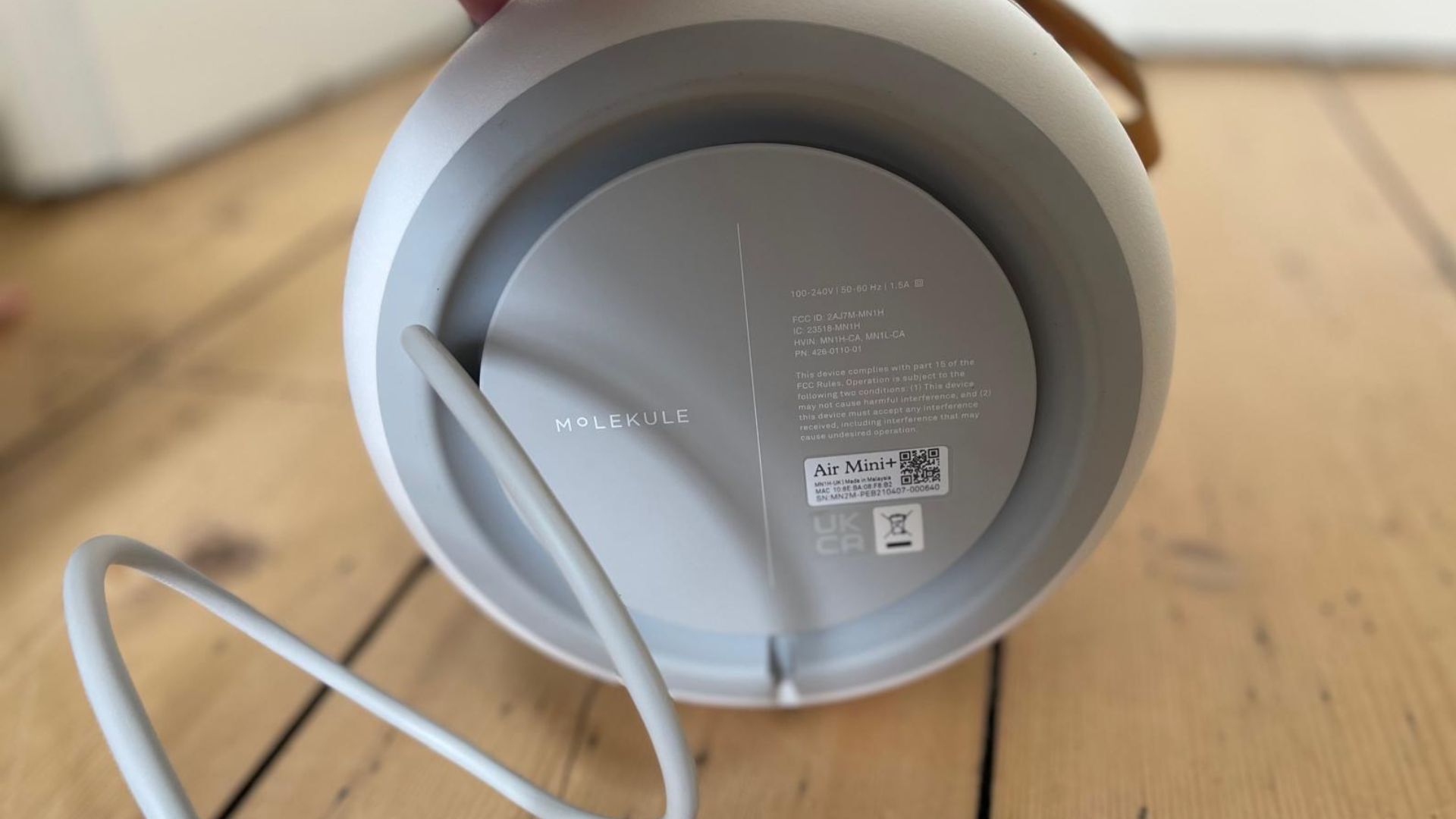
Specifications
Reasons to buy
Reasons to avoid
The Molekule Air Mini+ is a premium choice for allergy sufferers, thanks to its medical-grade construction and innovative PECO (Photo Electrochemical Oxidation) filtration technology. Unlike traditional HEPA filters that trap allergens, PECO actively destroys airborne pollutants at a molecular level, eliminating pollen, dust mites, mould, bacteria, and VOCs. It's smart stuff.
Beyond its performance, the sleek, compact design makes it a stylish addition to any home, which is a rare compliment for an air purifier. However, to achieve the sleek, compact, minimalistic aesthetic, all the controls and feedback have been moved over to the Molekule app, which is essential for monitoring air quality, adjusting settings, and tracking filter life. While the interface is user-friendly, it does mean you’ll need a smartphone for the best experience.
One downside is the higher price tag, making it more expensive than many competitors. Additionally, while it effectively tackles allergens and bacteria, its particle sensor does not detect VOCs, which may limit its responsiveness to certain air quality changes. Still, for those looking for cutting-edge filtration and a design-conscious purifier, the Molekule Air Mini+ is a standout choice.
You can find out more in my full review of the Molekule Air Mini+.
Best air purifier for pet homes

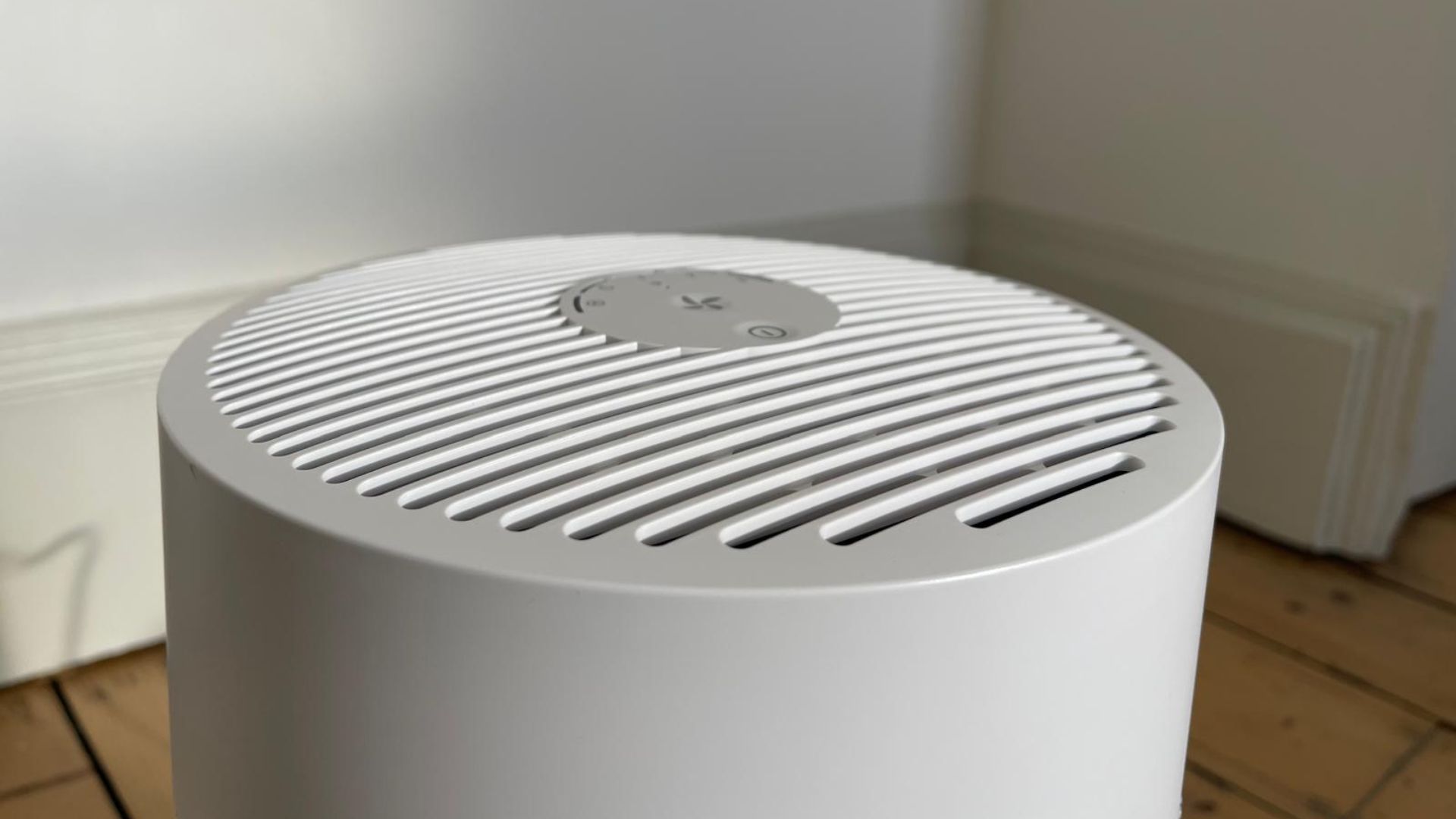
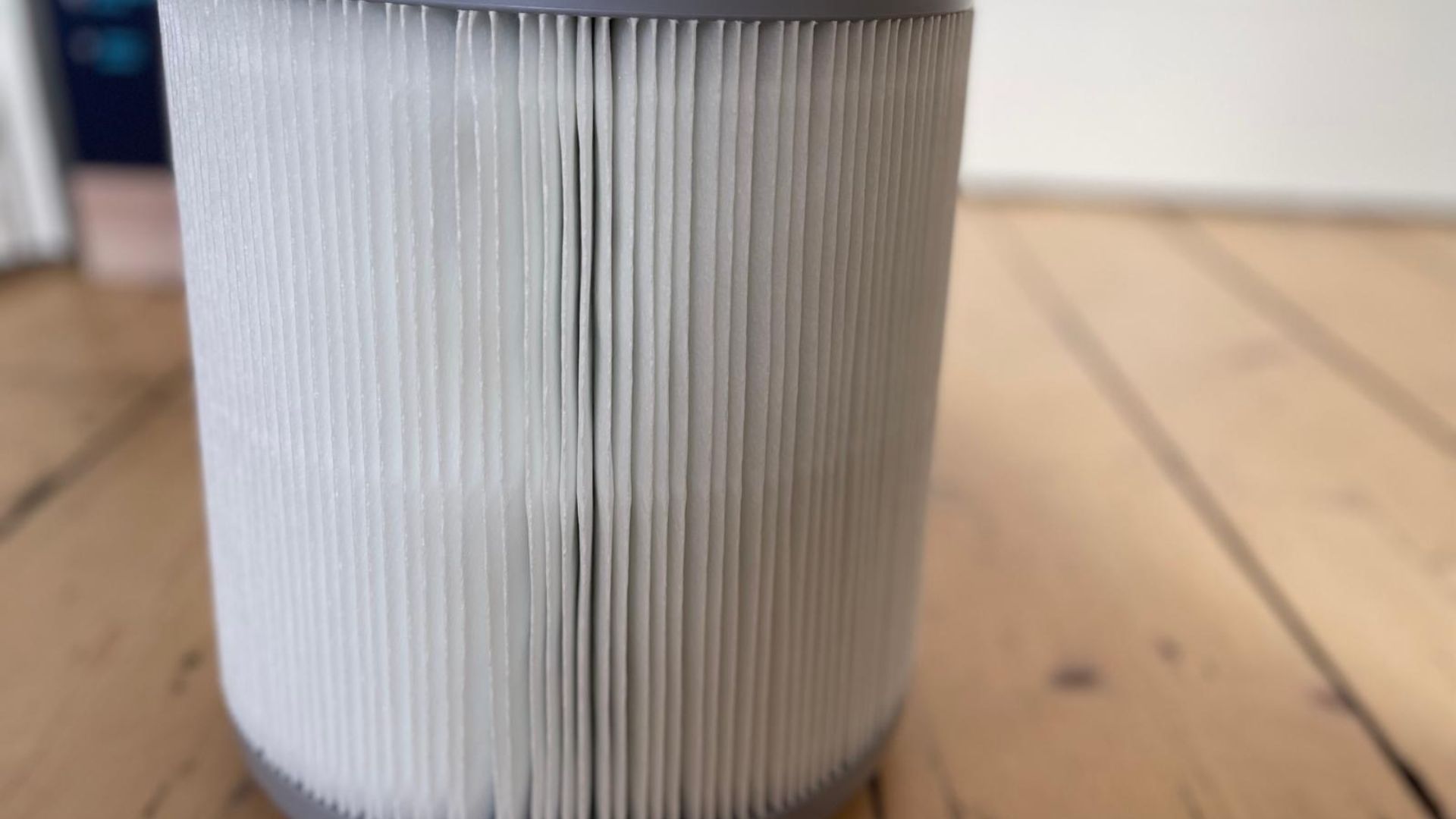
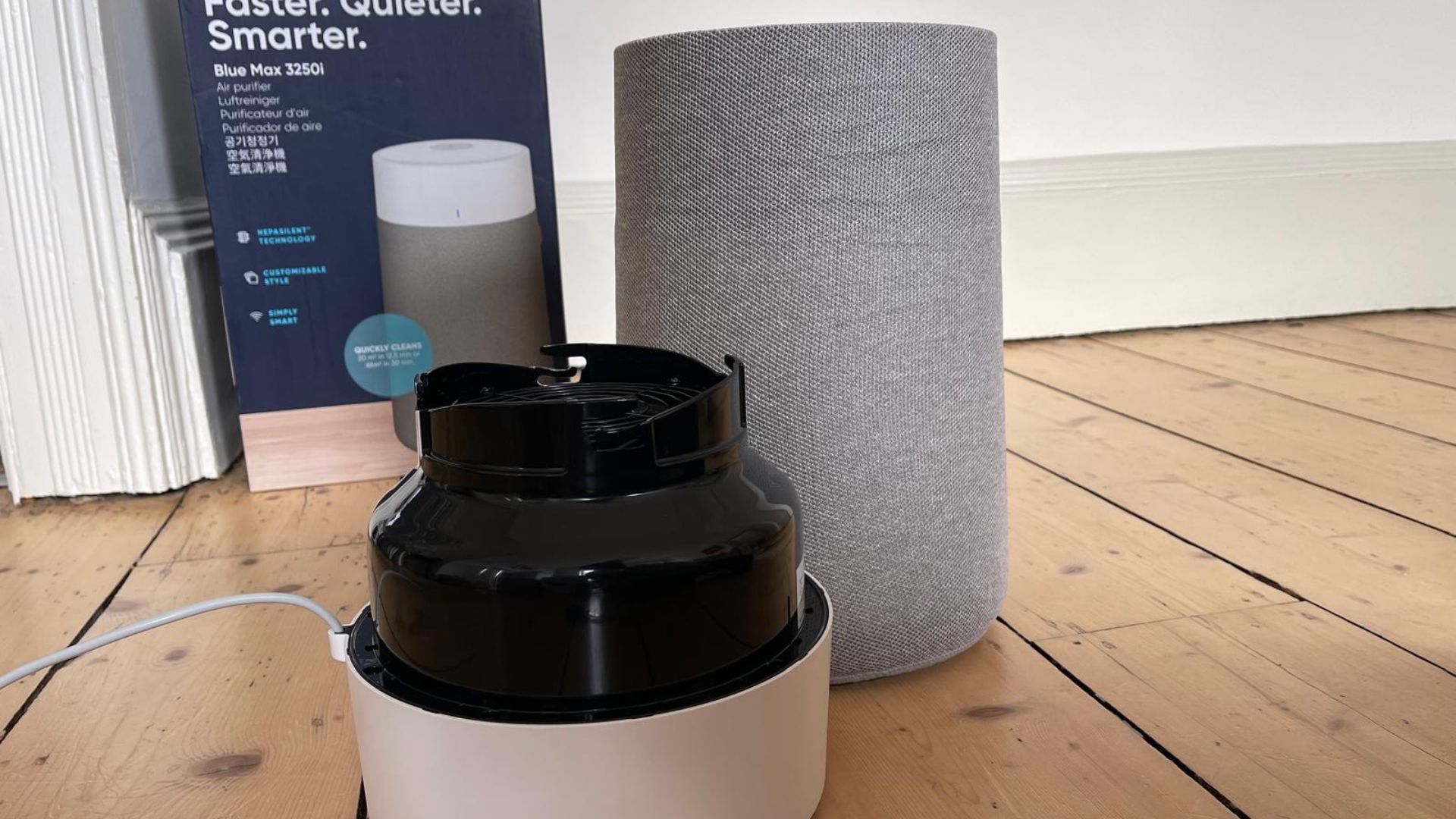
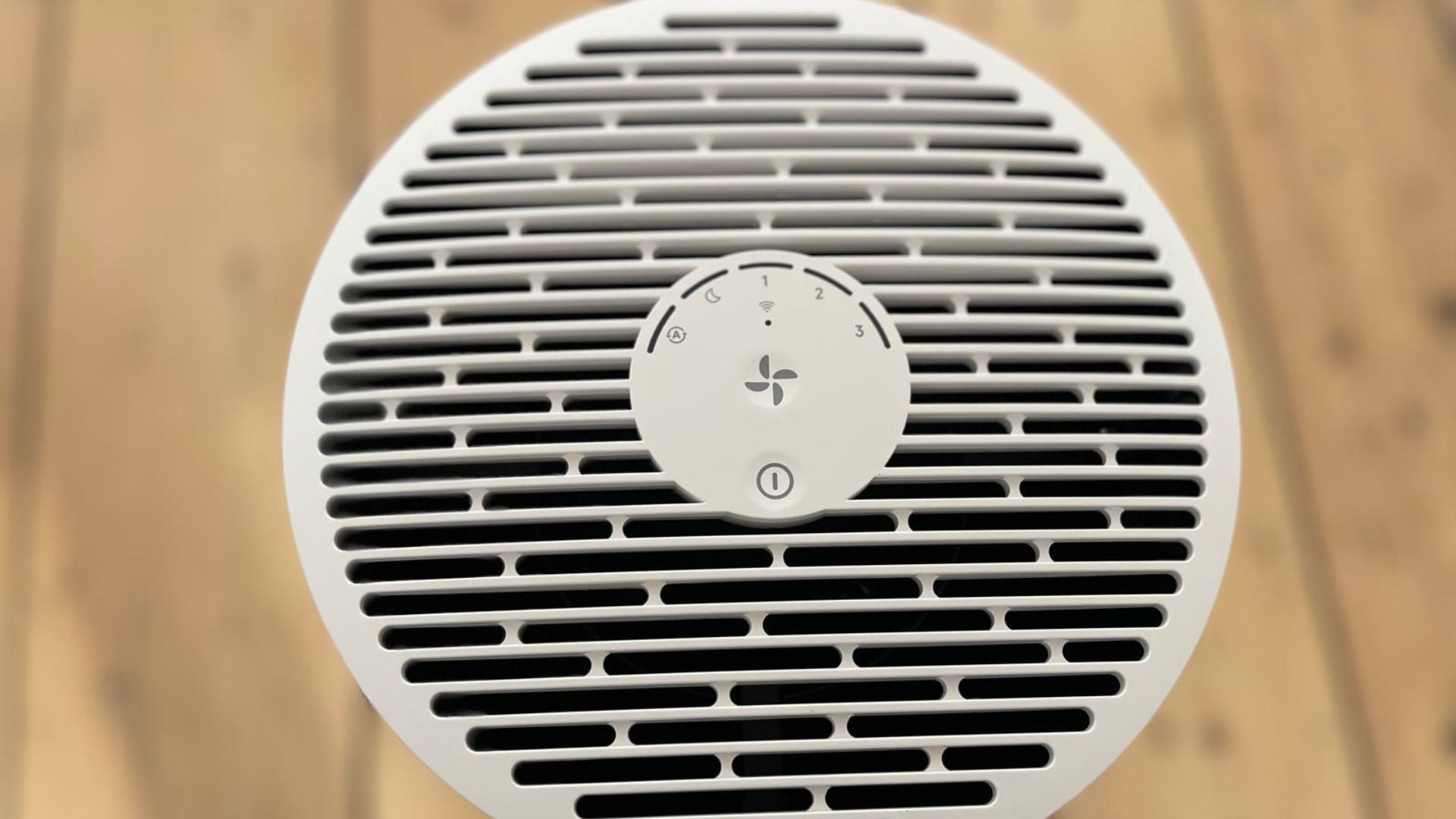

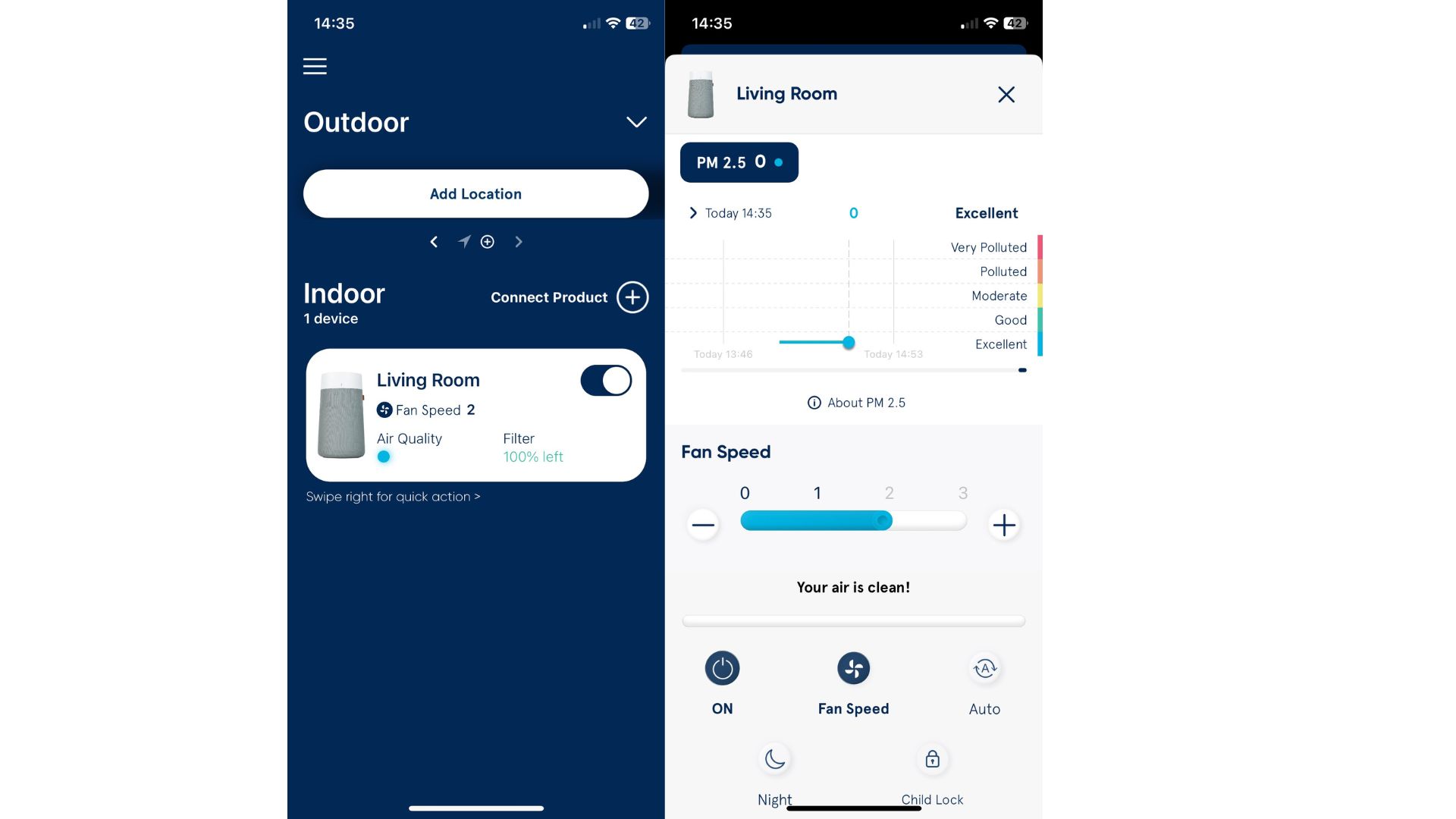
Specifications
Reasons to buy
Reasons to avoid
The Blueair Blue Max 3250i is an excellent choice for pet owners, combining powerful filtration with a washable fabric pre-filter that traps pet hair and dust before it even reaches the main filter. This fabric guard is not only easy to clean but can also be upgraded with different colours, making it a stylish and functional addition to any space. Lucky you.
Don't let the budget-friendly price fool you into thinking that this can't compete with the likes of Molekule either. In my tests, this performed to an impressive level. Blueair’s HEPASilent™ technology, combines electrostatic and mechanical filtration to remove 99.97% of airborne particles, including pet dander, allergens, and dust. I sprayed aerosols, burnt toast, and threw all sorts of pollutants at the BlueAir and it responded within seconds.
The simple top-mounted controls make it easy to for me to adjust the fan speed, but if you prefer a more high-tech approach, the Blueair app allows for remote monitoring and control, even integrating with Alexa and Google Assistant for voice commands. It’s also surprisingly quiet, even at higher speeds, making it a great choice for bedrooms or shared living spaces.
For an air purifier at this affordable price point, the Blueair Blue Max 3250i outperforms expectations. It’s certainly large and I'm skeptical on how robust it'll be with pets and kids charging around, but for now, I'm impressed
You can find out more in my full Blueair Blue Max 3250i Air Purifier review.
Best natural air purifier
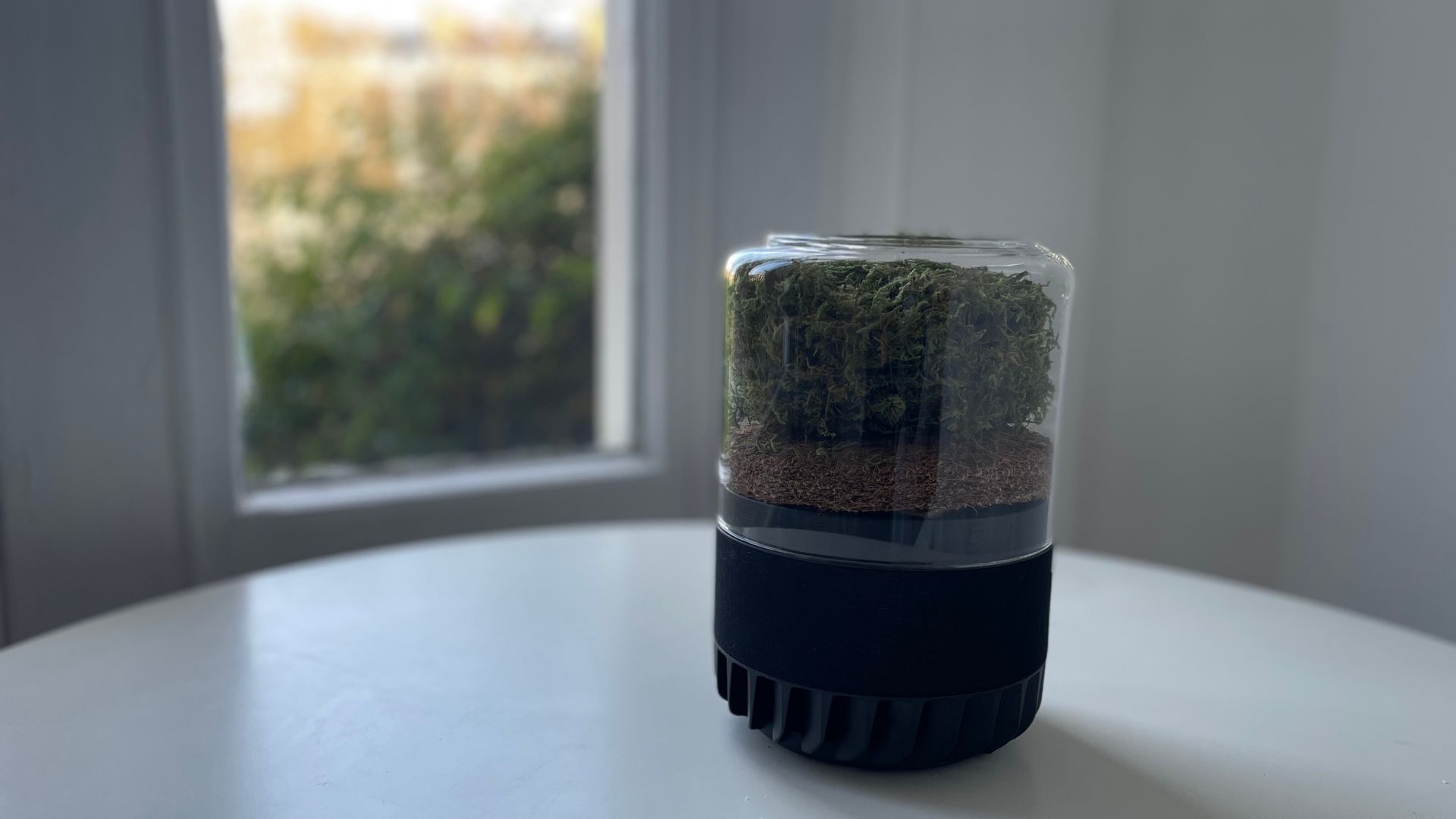
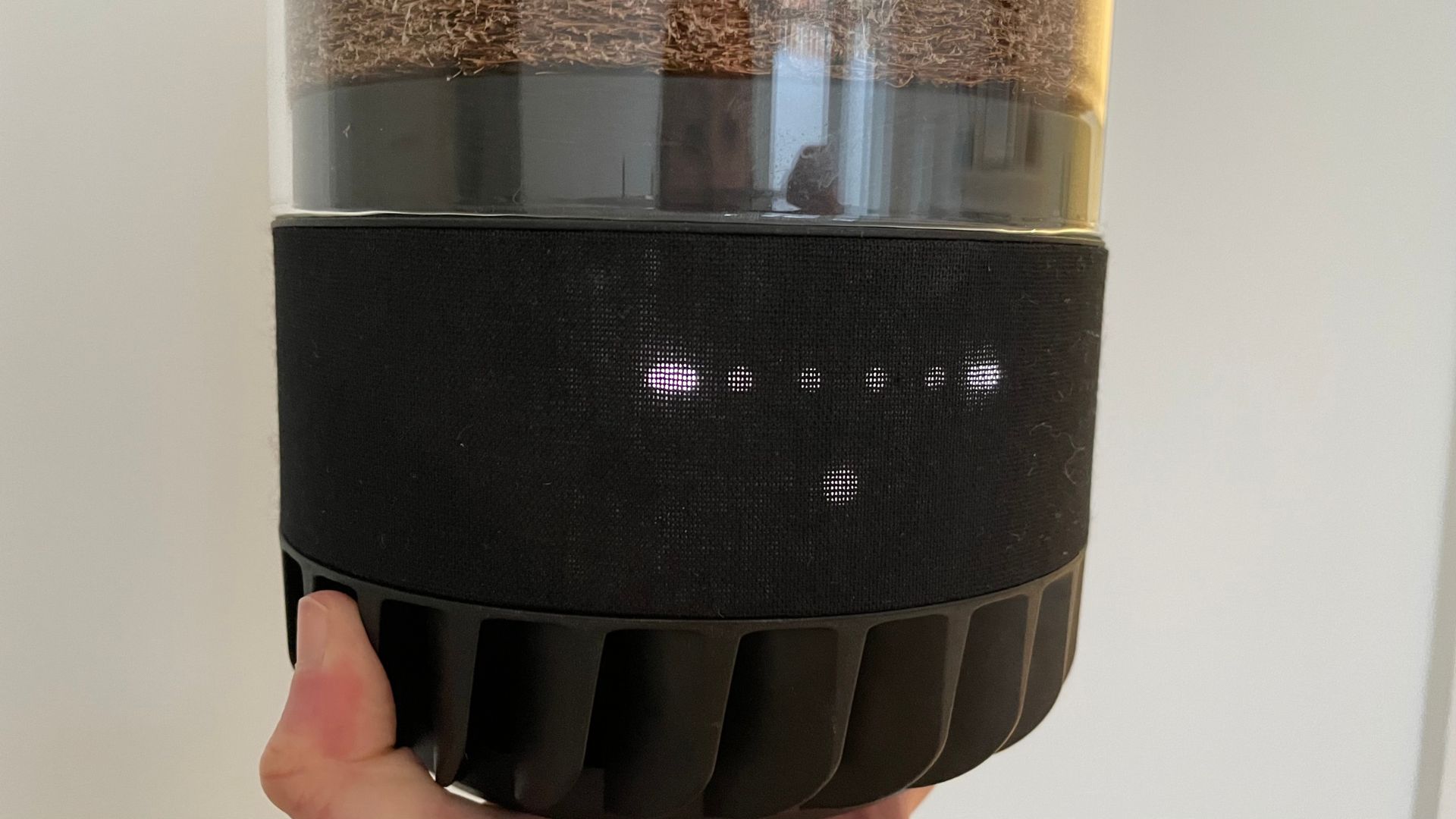
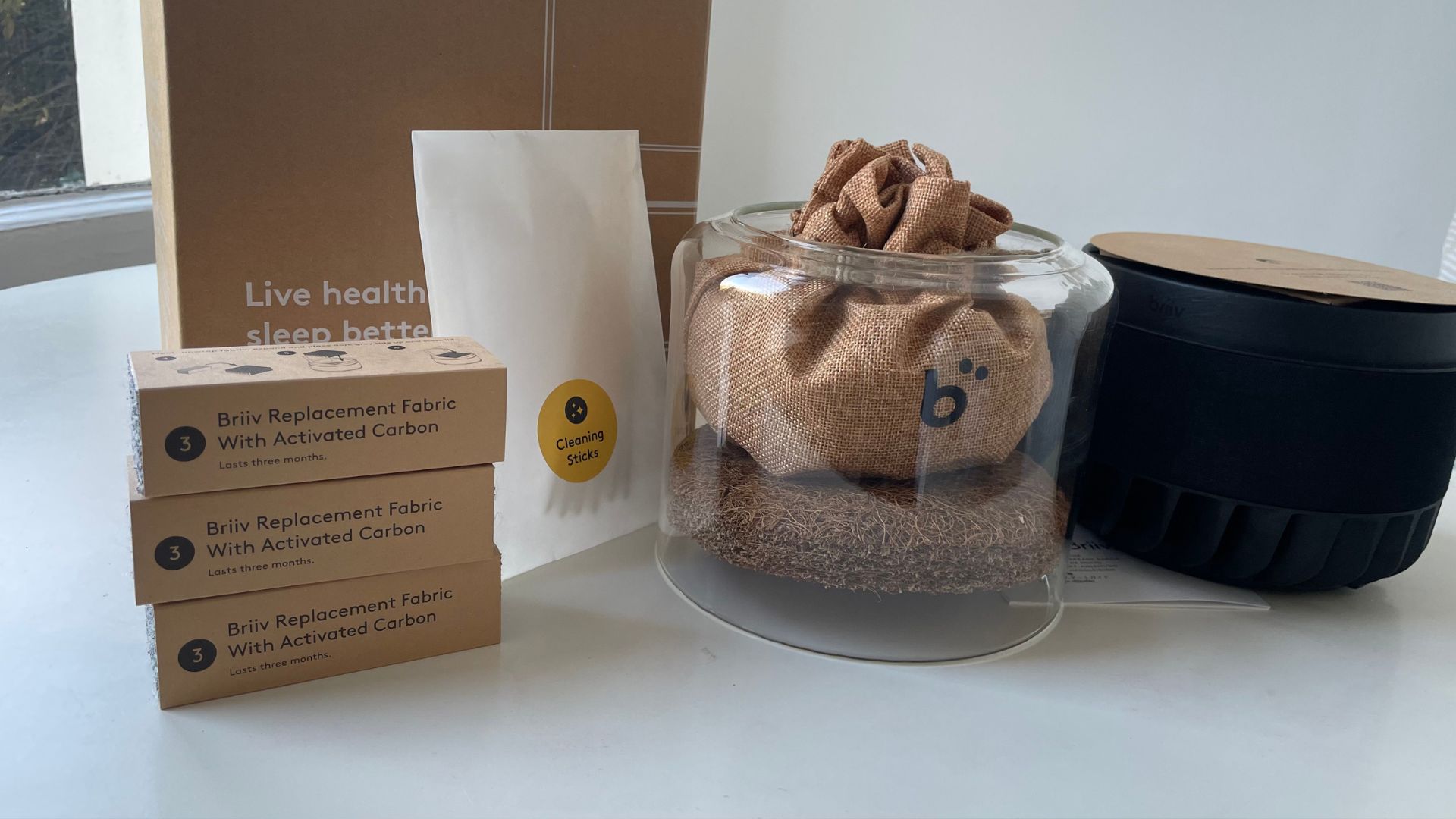
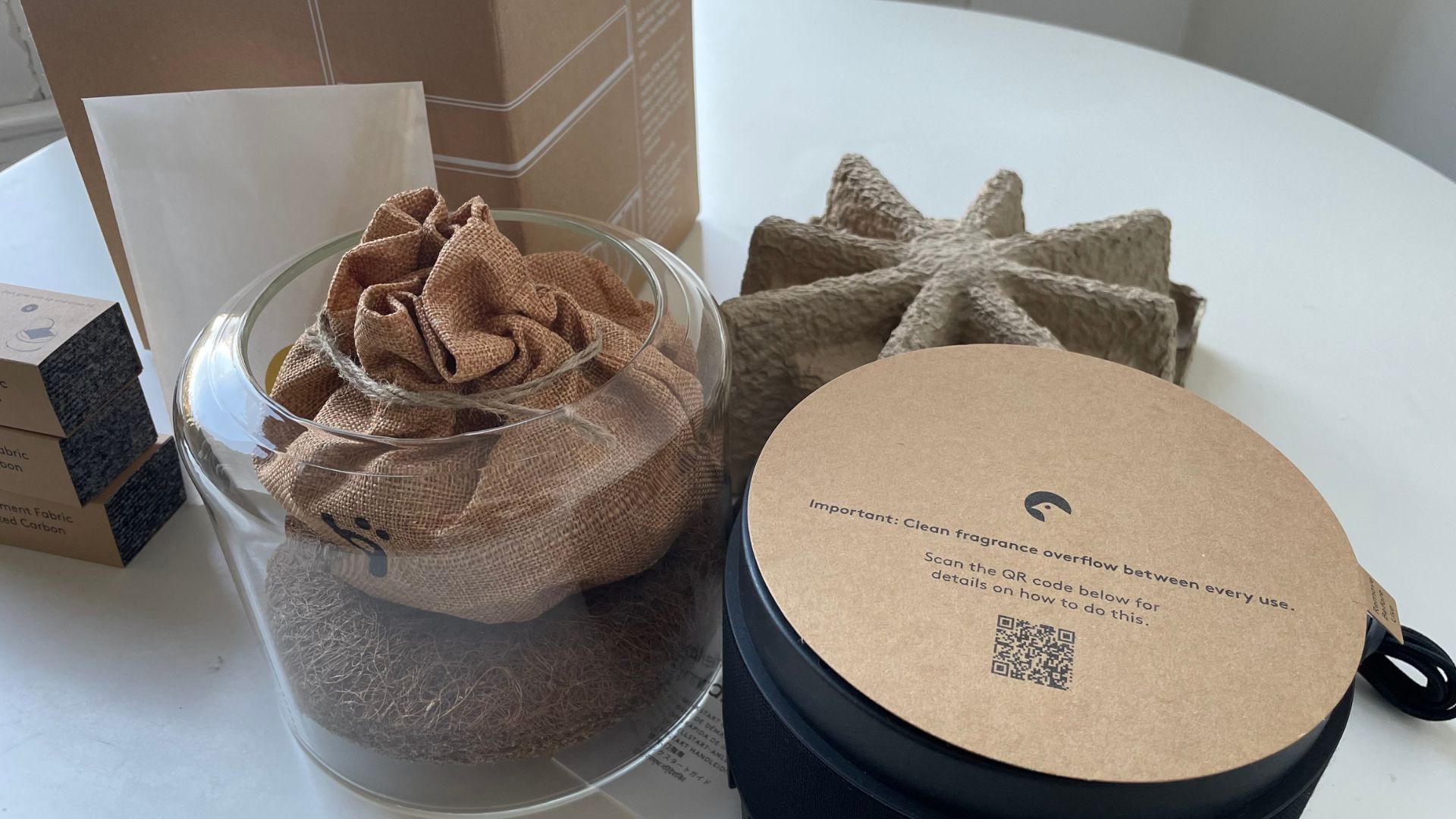
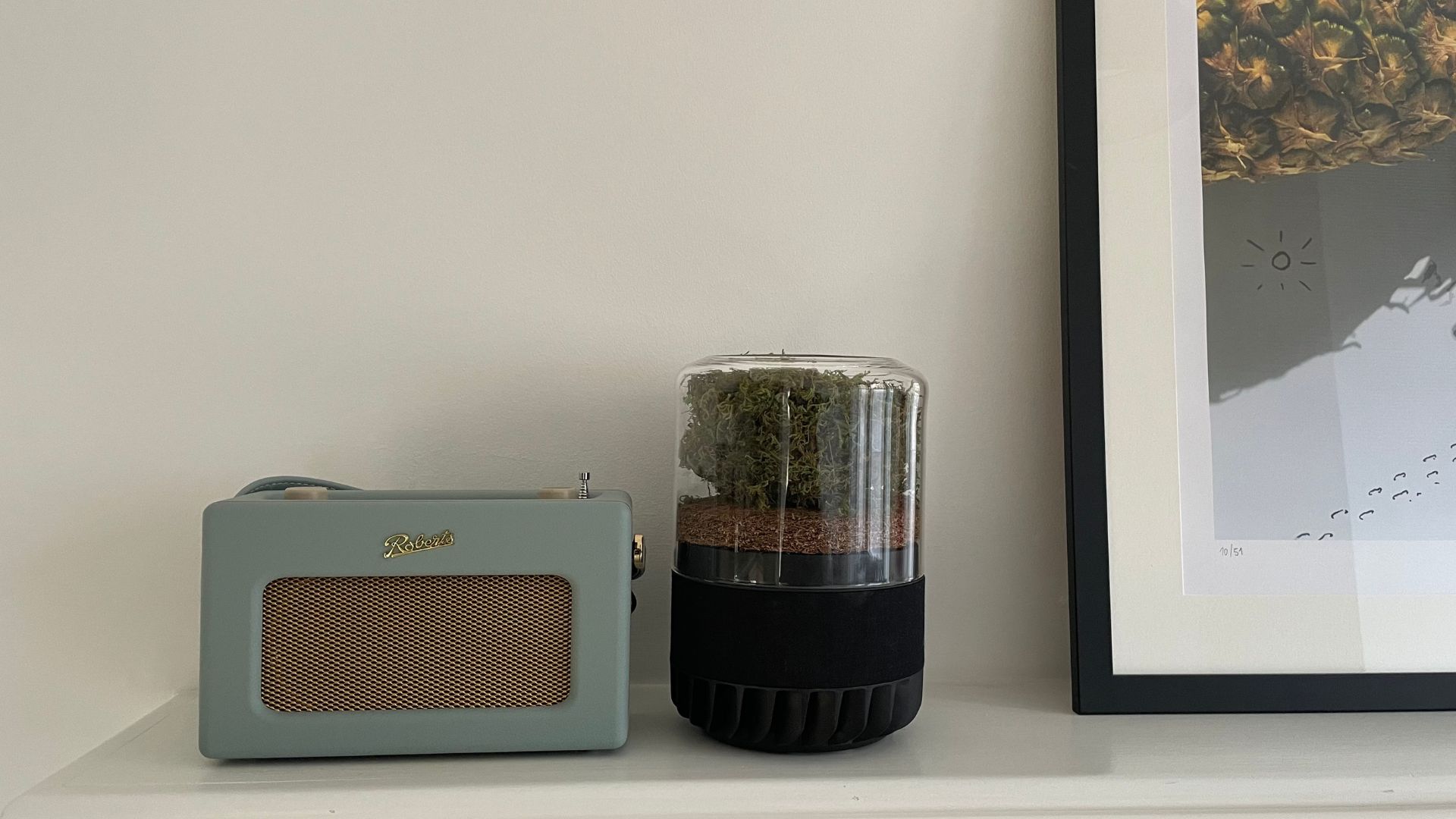
Specifications
Reasons to buy
Reasons to avoid
There's a lot of technical, medical information around air purifiers and I found myself asking, what if all this could be done naturally. As it turns out, Briiv had beaten me to it. By about twenty years. Their Briiv 2 Pro uses 90% renewable resources, including moss, coconut husks, and bio-plastics derived from waste potato and rice husks to filter the air and they do it in style too.
The Briiv 2 Pro is one of the most compact, most aesthetically appealing air purifiers that I've tested. Its compact form factor belies its efficiency; the purifier can cleanse a 4x4 meter space from dry shampoo, candle smoke, and paint fumes in just 21 minutes, which is a quick and quiet result, making it ideal for bedrooms, living rooms, or offices.
The beauty of the Briiv is also in how simple it is. You can use the touch controls on the front of the device, which light up with clever sensors. If you like to get techy, the Briiv app provides real-time air quality monitoring and control, giving you the details on your air quality and pollutants in real time.
While the Briiv 2 Pro's price point is higher than some conventional air purifiers, its commitment to sustainability and use of natural materials are worth the splurge for the eco-conscious as well as the style gurus.
You can find out more in my full Briiv 2 Pro Air Purifier review.
Best air purifier for every room
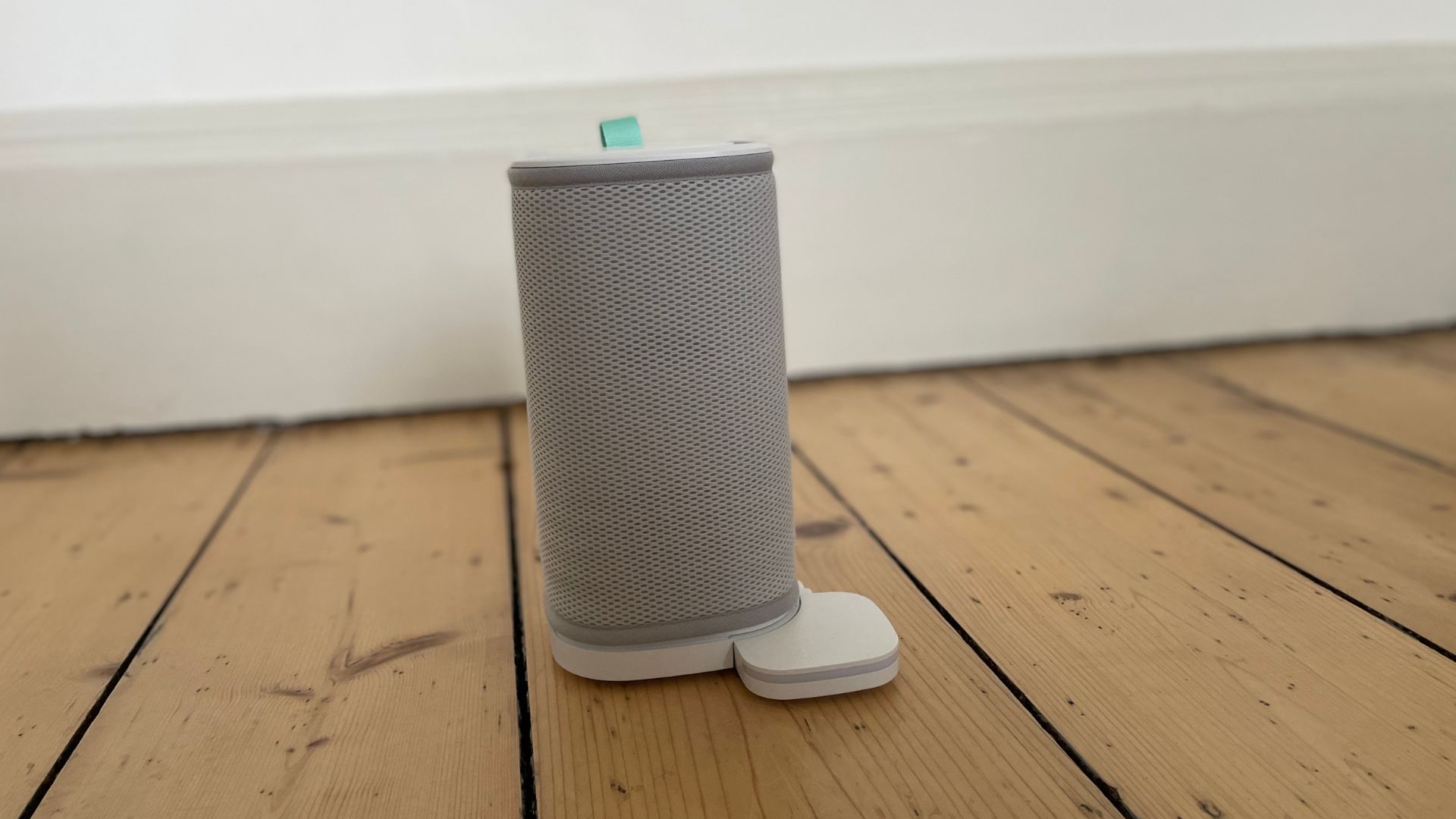
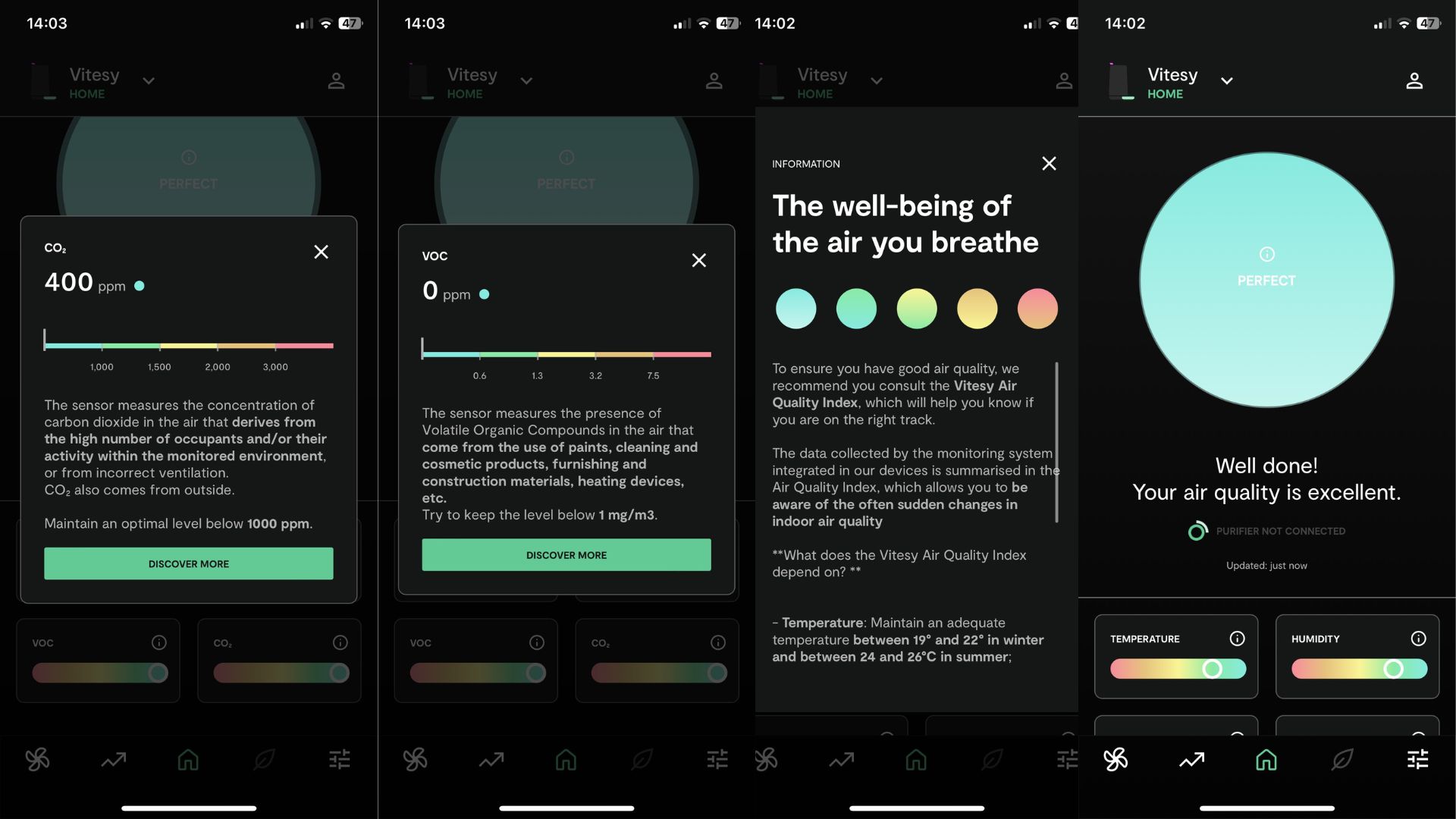
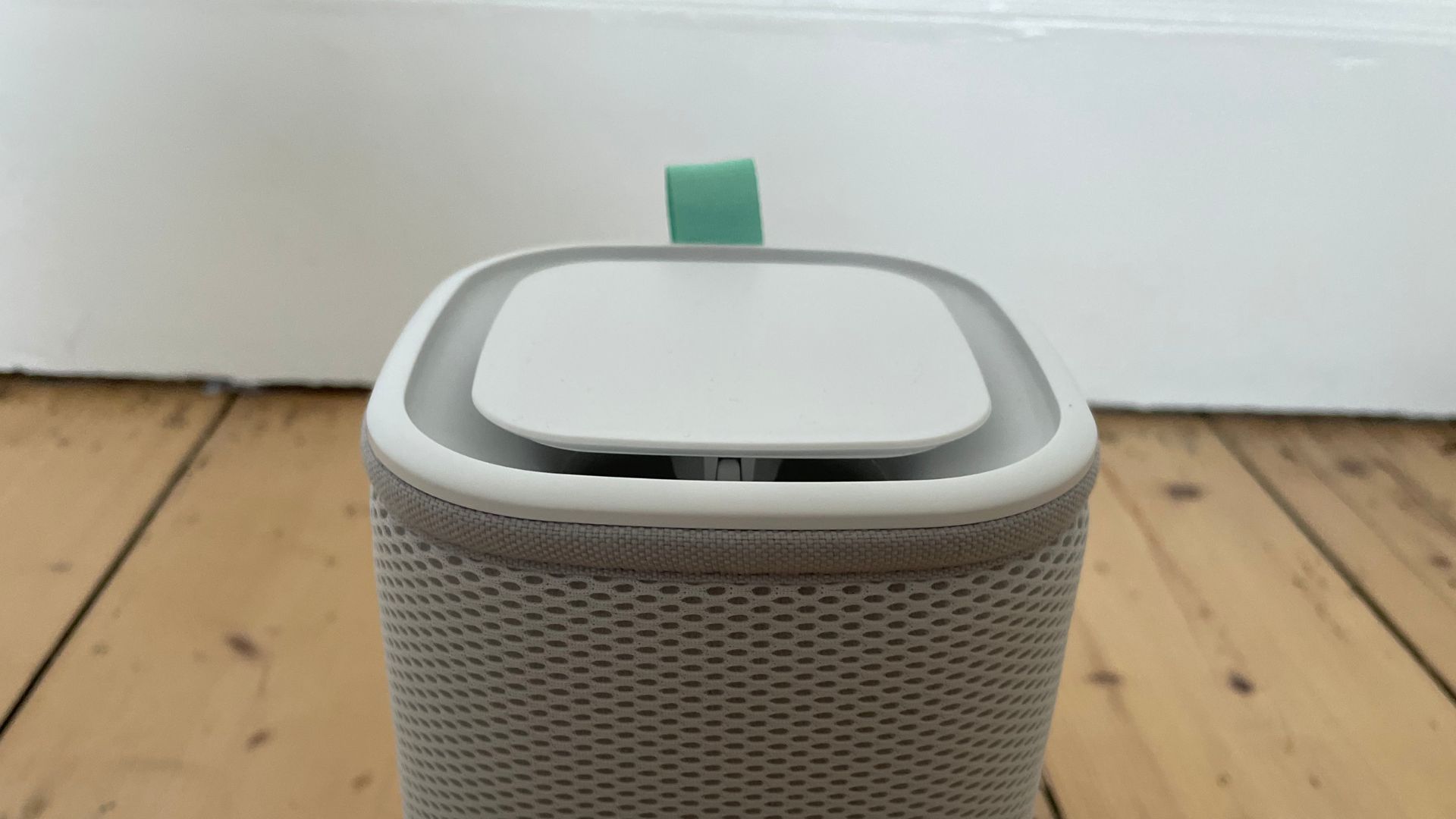
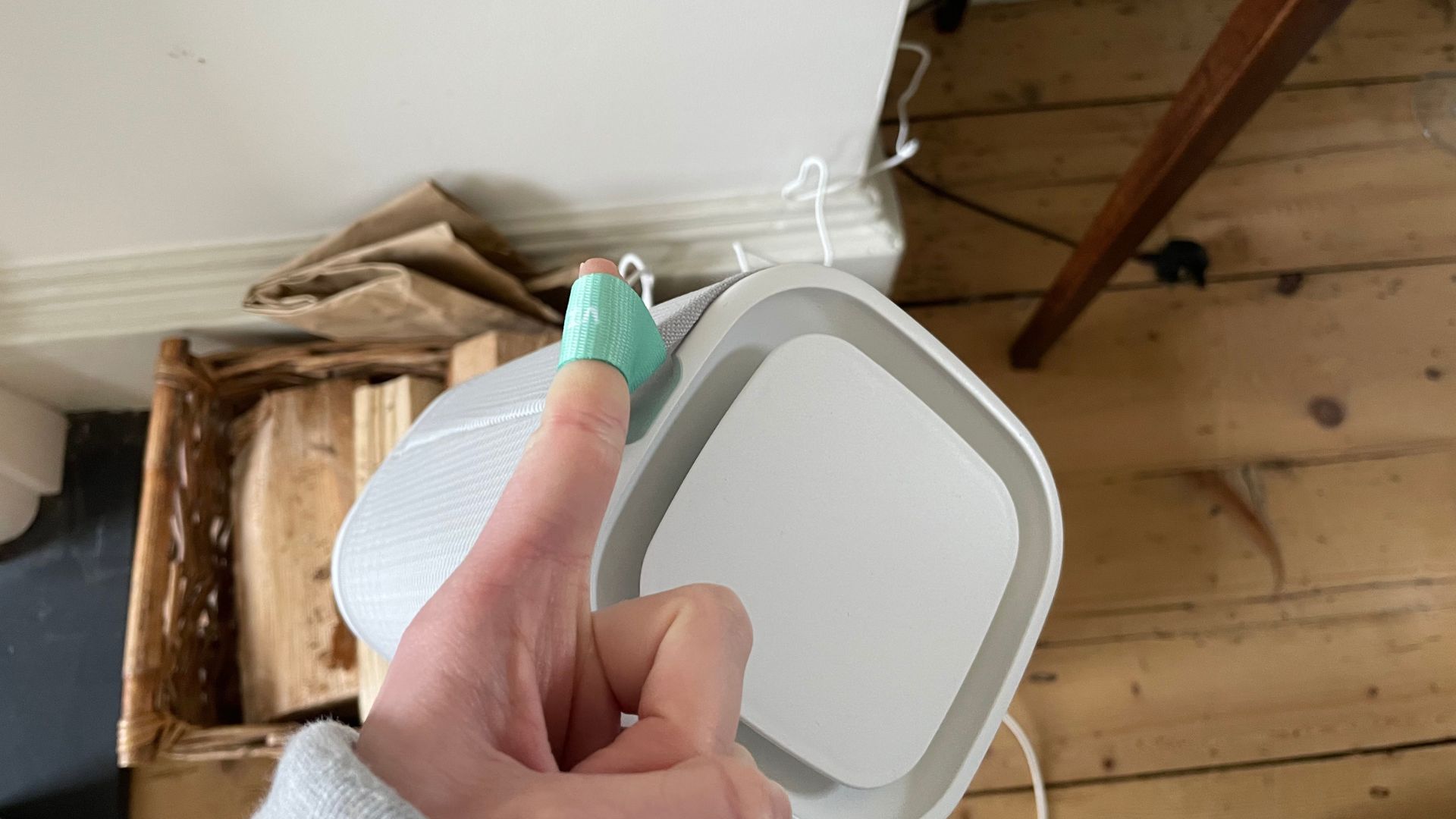
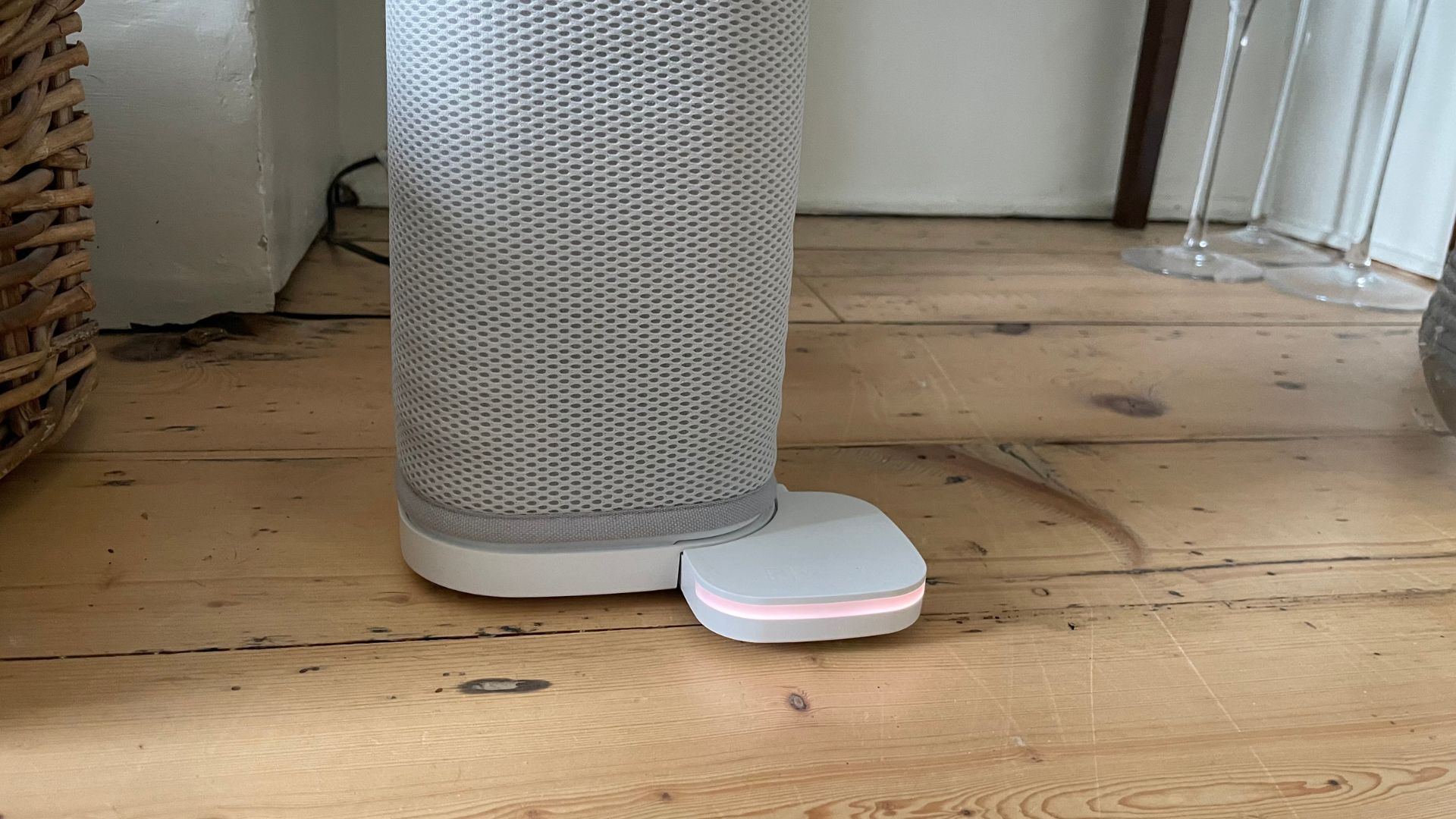
Specifications
Reasons to buy
Reasons to avoid
Vitesy has turned a lot of features that people believed were integral to air purifiers into innovations. The first example that I have is how portable this is. As a model that's no bigger than a water bottle, you can carry it with you from your desk to your kitchen table, up to your bedroom, sitting it on a magnetic docking station wherever you go. Some people end up buying a whole set, like surround sound speakers, and fitting them around the house. The fact that this device integrates with smart home systems like Google Assistant and Amazon Alexa, only enhances that theory of mine.
The next, very clever innovation is its filter, which is designed around a ceramic disc. This uses photocatalytic technology to eliminate bacteria, VOCs, and odours, to create a clean and healthy indoor atmosphere. The beauty of ceramic is that it's completely washable, so you won't need to buy replacement filters. It's another win for the eco-conscious.
One of the Eteria's notable features is its detailed companion app, which offers in-depth insights into your indoor air quality. The app provides real-time data on temperature, humidity, VOCs, and CO₂ levels, presented through intuitive graphs and daily histories. This comprehensive feedback allows users to monitor and manage their environment effectively.
You can find out more in my full review of the Vitesy Eteria.
How we tested the best air purifiers
I didn’t just read the specs from the manufacturers I carried out my own tests to gauge the personal benefits of using an air purifier, establishing the best air purifier for each kind of home.
While testing the purifiers I looked at a few different factors to reach a fair conclusion of the best overall models, including:
- How well they purified the air: Our tests used the high-end industrial air quality meter, the Met One Instruments Model 804 Handheld Particle Counter. With this, I tested the room’s initial air quality, tested it again after the air purifier had been used at its top setting for an hour, then compared the two sets of results to establish how well the air had been cleaned. We focused on the PM10 and PM2.5 figures because these are the ones the World Health Organization uses as benchmarks of air quality. These are particles measuring no more than 10 microns and no more than 2.5 microns respectively.
- Noise: Were the air purifiers on our list quiet enough not to notice, or did they interrupt our daily activities?
- Value-for-money: Were the priciest machines worth the extra money, or did more affordable options work as well?
- Style: I also assessed how well the below air purifiers would fit decor-wise in a home, sharing whether we thought it was stylish enough to fit.
- Ease-of-use: Finally, I looked at how easy each machine was to set up and operate on a daily basis, because overly complicated technology isn't ideal.
If you want to find out more, you can visit my page on how we test air purifiers.
FAQs
What do I need to consider before buying an air purifier?
There are a few things to think about before deciding if your home needs an air purifier and which one to purchase, to ensure you are getting the best air purifier to suit your needs. Consider the following before choosing a model:
- The size of the room: What size room do you want to use it in? There’s no point putting a design that purifies the air in a 15-square-meter room in an open-plan kitchen-diner that’s twice that size, as it just won’t be effective. Plus, do you want to move it around? If so, perhaps choose a lightweight option.
- Design: Some air purifiers are much more modern and aesthetically pleasing than others. Plus, assess the size and weight of the air purifier too it needs to fit neatly into your space.
- Extra features: Finally, pay attention to extra features - such as voice-activated controls, air-quality data via your smartphone, and even heating and cooling functions—and decide whether these functions will make your life easier or are unnecessary additions that you’d rather not pay more for.
- A HEPA air purifier: Almost all of the best air purifiers use high-efficiency particulate arresting (HEPA) filters to trap dust particles and other pollutants. They do not produce any ozone (something we want to avoid, as it can be harmful to our health), so it's important to make sure you purchase a HEPA air purifier. Models that are described as ‘ionizing air purifiers’ use an electric charge and do produce ozone, so do take this into consideration when buying.
What do air purifiers actually do?
You might be wondering exactly how air purifiers work. They operate much like fans but, rather than simply circulating air, they pull it in and move it through a series of filters that collect (or trap) different sizes of airborne particles, before recirculating the air. The air pollution particles - everything from dust to microscopic particles such as smoke, pollen, odors, and germs - are then trapped in the layers of the filter cartridge, reducing the pollutants in your home. And if you're wondering how to clean your air purifier, it's worth noting that even with the best air purifier, over time (and with use) these filters require maintenance, if they’re not reusable or washable, they’ll need replacing fairly regularly for the air purifier to continue to function efficiently.
Most air purifiers recirculate the air discreetly, so there’s no cooling breeze like that of a fan. However, you can buy air purifiers that have extra cooling functions, which are useful for the hotter summer months - we've included two above. It's also worth noting that in the air purifiers vs dehumidifiers debate, dehumidifiers are more useful for ridding your home of winter condensation than an air purifier.
Air purifiers vary in how they filter and purify your air though. Some air purifiers are small and simple - you just turn them on to your chosen setting and leave them to clean the air in your room. Others are known as ‘smart’; they contain a sensor that measures air quality in order to choose their own setting accordingly, and can also be connected to an app on your phone so you can control them remotely. Additionally, these apps usually allow you to keep track of air quality ups and downs. The best air purifier for you depends on personal preference, but it's worth noting that smart purifiers tend to be more expensive.
What is the CADR and why is it so important?
When choosing the best air purifier for your home, the other main consideration is how much air each model can filter. After all, one of the main air purifiers benefits is that it rids your space of harmful pollutants. In order to measure how much air each model can filter, it is necessary to take a look at its Clean Air Delivery Rate (CADR). Measured in cubic meters per hour (m³/h), it refers to the volume of air that an air purifier can clean in the space of an hour. If you want really clean air, the gold standard is for all the air in the room to be cleaned five times an hour.
"CADR Or Clean Air Delivery Rate is a performance matric developed by AHAM (Association of Home Appliance Manufacturers) to show the relative performance of a room air cleaner’s ability to pull dust, smoke, and spores out of the air," Tony Abate, a certified indoor environmentalist as designated by the Indoor Air Quality Association and the American Air Quality Council, told us.
"It gives the consumer an important scale to determine the performance of the device and tested to an independent standardized test method. There are CADR ratings for dust, spores, and smoke, and very recently AHAM released ANSI AHAM AC-5 which is a test for micro-organism reduction in space."
It might help to dig out your tape measure. If, for example, your room measures 16m² (the room’s length multiplied by the width) and your ceiling is 2.5m high then you have a volume of 16x2.5 = 40m³ of air. To clean it five times an hour you need a CADR that’s five times that number, so at least 200m³/h. Look for a higher CADR if you want clean air in larger rooms and open-plan spaces. If this is a technical spec too far, don’t worry - we’ve done the maths for you in the reviews above.
Are HEPA air purifiers better?
Many of the air purifiers on our list have HEPA filters, but what does this actually mean? HEPA stands for high-efficiency particulate air and is a vital component for an air purifier, as Abate concludes. "HEPA filters allow for very small range particles to be captured to a high efficiency," he explains. "When considering a viral-sized particle, HEPA is the only filter that can capture something that small. This is why they are often used in healthcare settings.
"For enhanced protection, especially on very small particles, HEPA is the best choice, especially if combined with an active technology such as bi-polar air ionization as well."
Do air purifiers get rid of dust?
In short yes, air purifiers do get rid of dust in the home. While for most dust is just an annoyance to have to constantly battle against, for some it can be far worse. Airborne allergens expert Max Wiseberg explains; "“Dust allergy is in fact a reaction to proteins in the excretion of the dust mites. Yes, that’s right – you’re allergic to dust mite poo. When the allergenic proteins are breathed in or make contact with the skin of an allergic person, their body reacts with symptoms – wheezing, sneezing, runny nose and soreness and redness of the skin and eyes.”
"Consider using an air purifier with a HEPA (High-Efficiency Particle Arresting) filter to capture the pet allergen particles and cool and circulate the air.”
I could shoot the breeze all day about how special and essential air purifiers are in your home, so if you still have questions about which is the right one for you, don't hesitate to send me an email. These can get techy and complicated, so it's really helpful to breakdown what you need and whether the expensive extras are genuinely worth the splurge.
Sign up for the woman&home newsletter
Sign up to our free daily email for the latest royal and entertainment news, interesting opinion, expert advice on styling and beauty trends, and no-nonsense guides to the health and wellness questions you want answered.

Laura is woman&home's eCommerce editor, in charge of testing, reviewing and creating buying guides for the Homes section, so you'll usually see her testing everything from the best dehumidifiers to sizing up the latest Le Cruset pot. Previously, she was eCommerce editor at Homes & Gardens magazine, where she specialised in covering coffee and product content, looking for pieces tailored for timelessness. The secret to her heart is both simplicity and quality. She is also a qualified Master Perfumer and holds an English degree from Oxford University. Her first editorial job was as Fashion writer for The White Company.
- Kenedee FowlerShopping Writer
- Caramel Quin
-
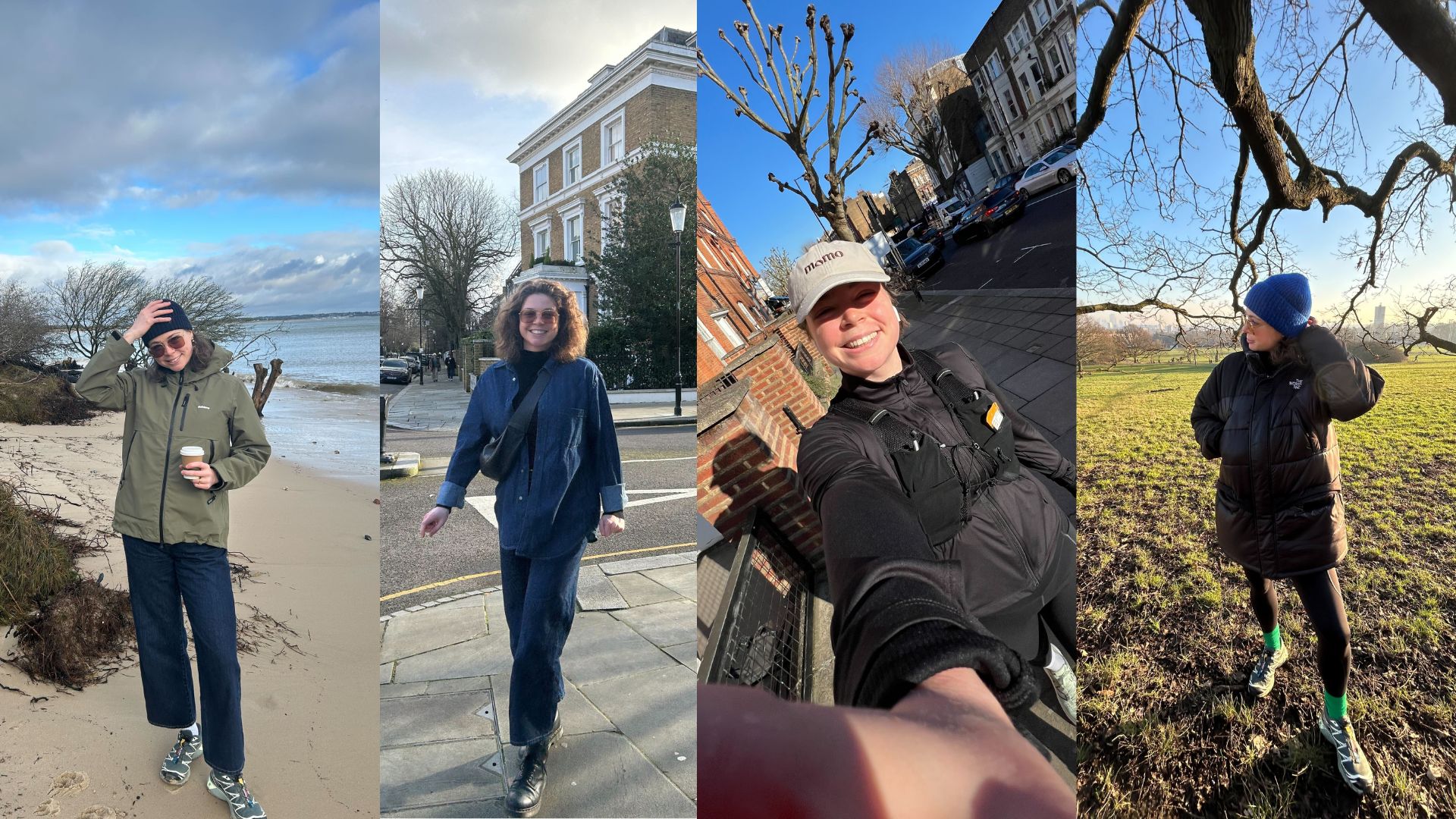 I did 10,000 steps a day for a month - these are the walking apps that helped make it happen
I did 10,000 steps a day for a month - these are the walking apps that helped make it happenThere's no better time to stretch your legs in the great outdoors - and some of the best walking apps can help you make the most of your time
By Grace Walsh
-
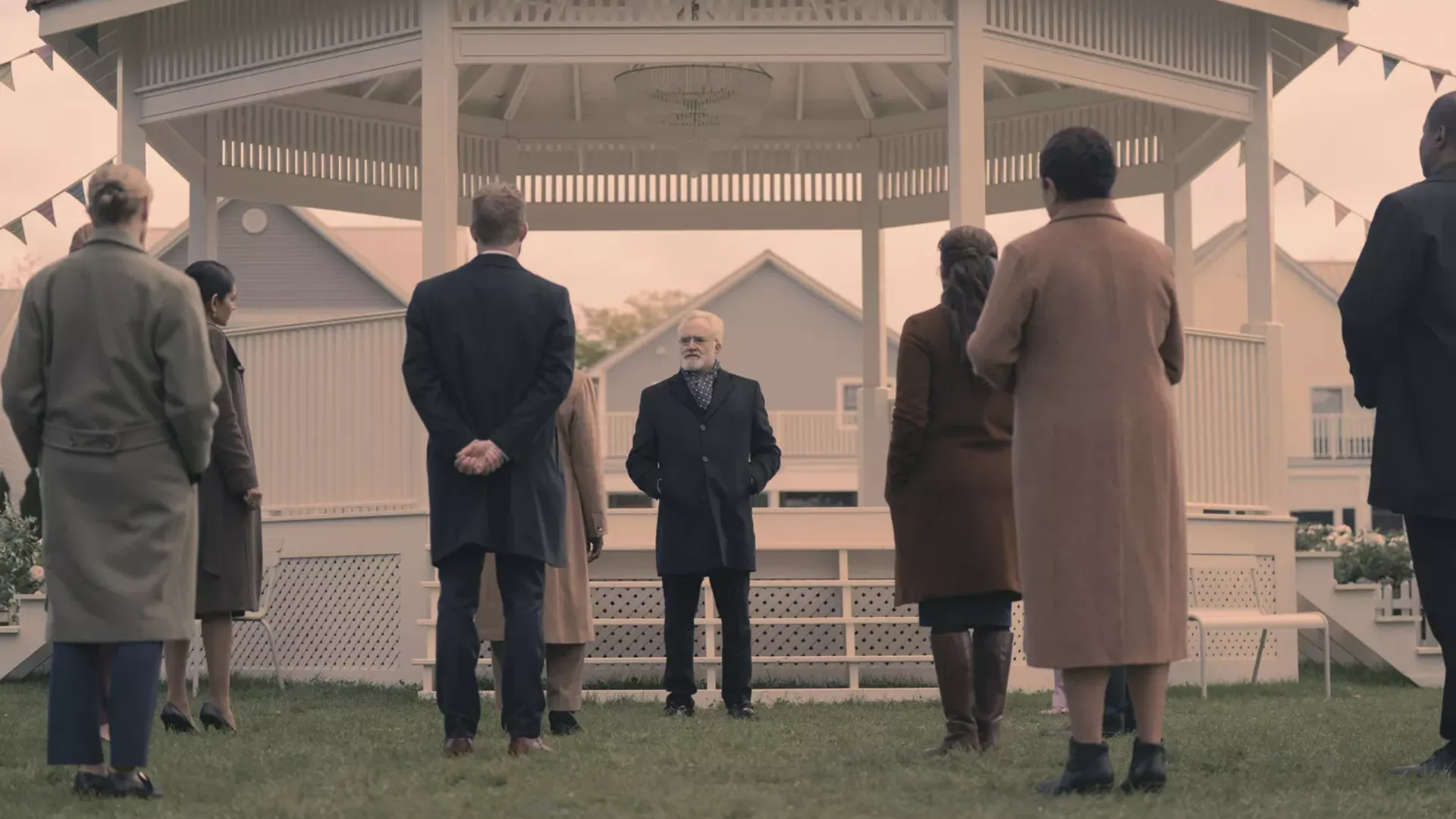 Where is New Bethlehem in The Handmaid's Tale? The fictional place and real-life filming locations explored
Where is New Bethlehem in The Handmaid's Tale? The fictional place and real-life filming locations exploredNew Bethlehem features a lot in season 6 of The Handmaid's Tale - we reveal where it could sit within the show's geography as well as the real-life filming location.
By Lucy Wigley
